

Family Life

AAP Schedule of Well-Child Care Visits

Parents know who they should go to when their child is sick. But pediatrician visits are just as important for healthy children.
The Bright Futures /American Academy of Pediatrics (AAP) developed a set of comprehensive health guidelines for well-child care, known as the " periodicity schedule ." It is a schedule of screenings and assessments recommended at each well-child visit from infancy through adolescence.
Schedule of well-child visits
- The first week visit (3 to 5 days old)
- 1 month old
- 2 months old
- 4 months old
- 6 months old
- 9 months old
- 12 months old
- 15 months old
- 18 months old
- 2 years old (24 months)
- 2 ½ years old (30 months)
- 3 years old
- 4 years old
- 5 years old
- 6 years old
- 7 years old
- 8 years old
- 9 years old
- 10 years old
- 11 years old
- 12 years old
- 13 years old
- 14 years old
- 15 years old
- 16 years old
- 17 years old
- 18 years old
- 19 years old
- 20 years old
- 21 years old
The benefits of well-child visits
Prevention . Your child gets scheduled immunizations to prevent illness. You also can ask your pediatrician about nutrition and safety in the home and at school.
Tracking growth & development . See how much your child has grown in the time since your last visit, and talk with your doctor about your child's development. You can discuss your child's milestones, social behaviors and learning.
Raising any concerns . Make a list of topics you want to talk about with your child's pediatrician such as development, behavior, sleep, eating or getting along with other family members. Bring your top three to five questions or concerns with you to talk with your pediatrician at the start of the visit.
Team approach . Regular visits create strong, trustworthy relationships among pediatrician, parent and child. The AAP recommends well-child visits as a way for pediatricians and parents to serve the needs of children. This team approach helps develop optimal physical, mental and social health of a child.
More information
Back to School, Back to Doctor
Recommended Immunization Schedules
Milestones Matter: 10 to Watch for by Age 5
Your Child's Checkups
- Bright Futures/AAP Recommendations for Preventive Pediatric Health Care (periodicity schedule)
Catch Up on Well-Child Visits and Recommended Vaccinations

Many children missed check-ups and recommended childhood vaccinations over the past few years. CDC and the American Academy of Pediatrics (AAP) recommend children catch up on routine childhood vaccinations and get back on track for school, childcare, and beyond.

Making sure that your child sees their doctor for well-child visits and recommended vaccines is one of the best things you can do to protect your child and community from serious diseases that are easily spread.
Well-Child Visits and Recommended Vaccinations Are Essential
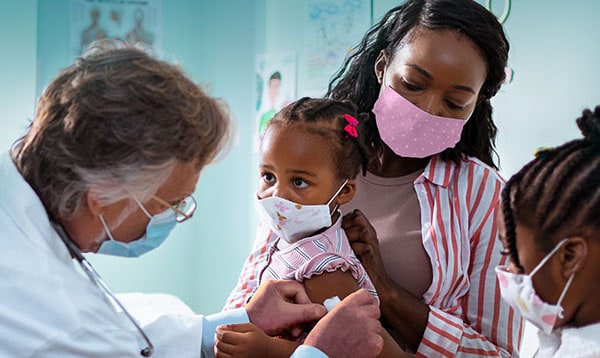
Well-child visits and recommended vaccinations are essential and help make sure children stay healthy. Children who are not protected by vaccines are more likely to get diseases like measles and whooping cough . These diseases are extremely contagious and can be very serious, especially for babies and young children. In recent years, there have been outbreaks of these diseases, especially in communities with low vaccination rates.
Well-child visits are essential for many reasons , including:
- Tracking growth and developmental milestones
- Discussing any concerns about your child’s health
- Getting scheduled vaccinations to prevent illnesses like measles and whooping cough (pertussis) and other serious diseases

It’s particularly important for parents to work with their child’s doctor or nurse to make sure they get caught up on missed well-child visits and recommended vaccines.
Routinely Recommended Vaccines for Children and Adolescents
Getting children and adolescents caught up with recommended vaccinations is the best way to protect them from a variety of vaccine-preventable diseases . The schedules below outline the vaccines recommended for each age group.
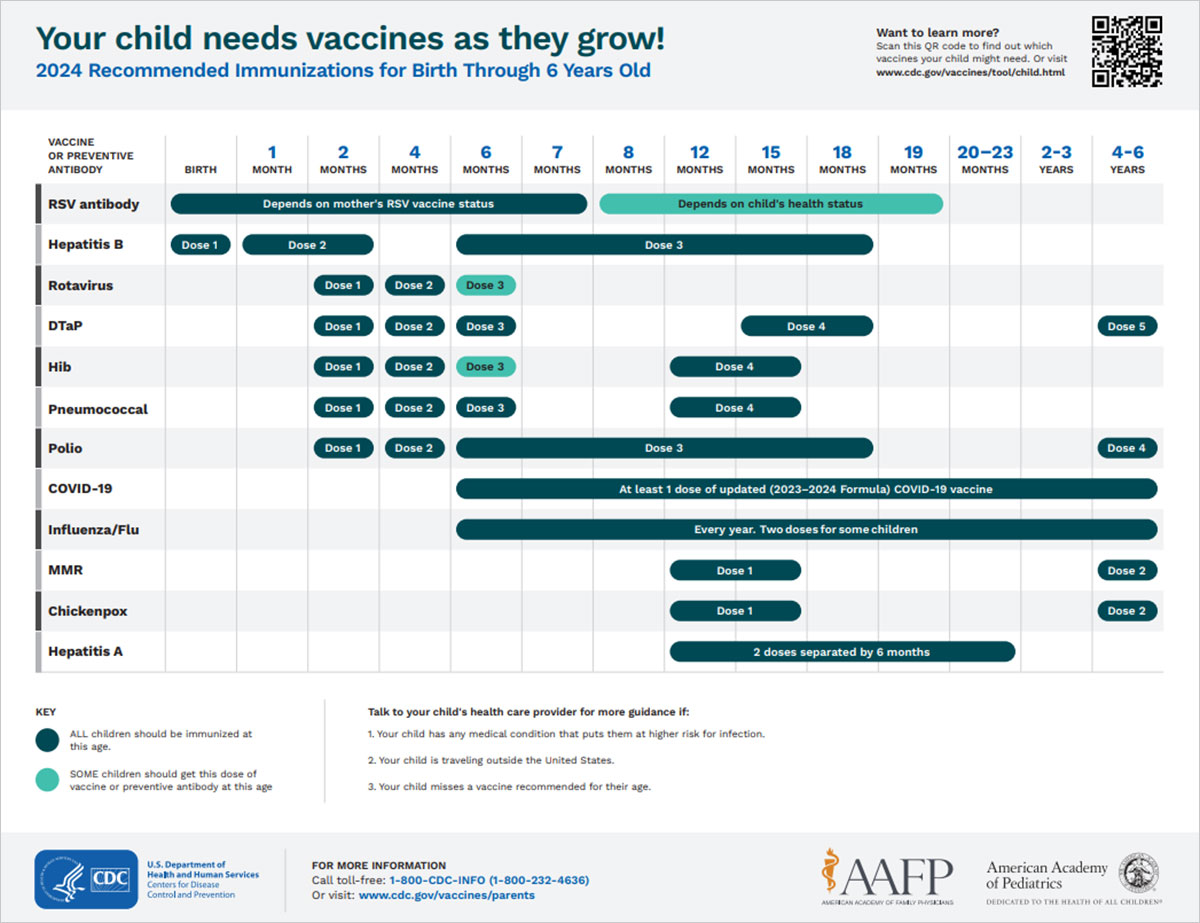
See which vaccines your child needs from birth through age 6 in this easy-to-read immunization schedule.
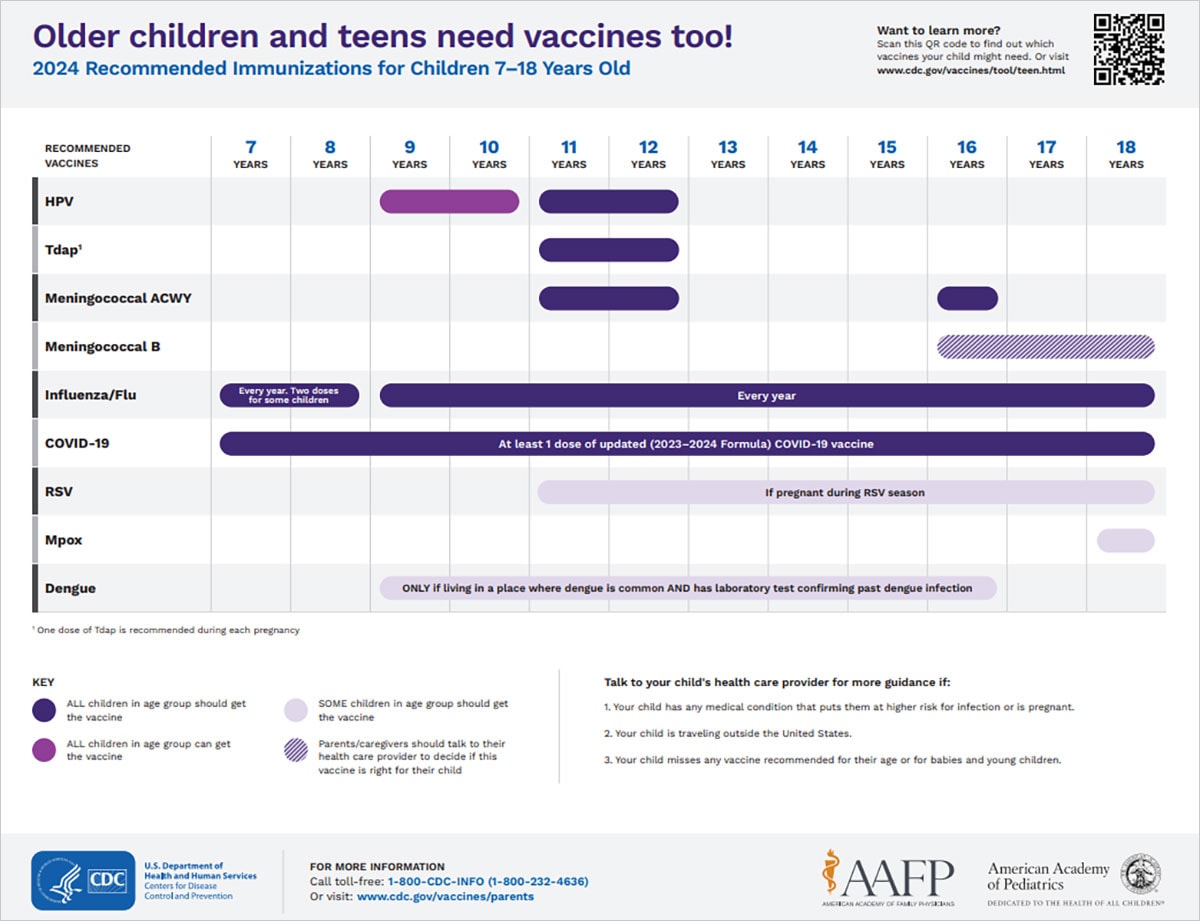
See which vaccines your child needs from ages 7 through 18 in this easy-to-read immunization schedule.
The Vaccines for Children (VFC) program provides vaccines to eligible children at no cost. This program provides free vaccines to children who are Medicaid-eligible, uninsured, underinsured, or American Indian/Alaska Native. Check out the program’s requirements and talk to your child’s doctor or nurse to see if they are a VFC provider. You can also find a VFC provider by calling your state or local health department or seeing if your state has a VFC website.

COVID-19 Vaccines for Children and Teens
Everyone aged 6 months and older can get an updated COVID-19 vaccine to help protect against severe illness, hospitalization and death. Learn more about making sure your child stays up to date with their COVID-19 vaccines .
- Vaccines & Immunizations
Exit Notification / Disclaimer Policy
- The Centers for Disease Control and Prevention (CDC) cannot attest to the accuracy of a non-federal website.
- Linking to a non-federal website does not constitute an endorsement by CDC or any of its employees of the sponsors or the information and products presented on the website.
- You will be subject to the destination website's privacy policy when you follow the link.
- CDC is not responsible for Section 508 compliance (accessibility) on other federal or private website.
- Skip to main content
Child well visits, birth to 15 months
- Child well visit checklist
- Quiz: Child well-being and immunizations
Checking in: Questions to ask at your child's well visits
Welcoming a new child is exciting. But caring for a baby can also leave you with a lot of unanswered questions. Your baby’s care provider can help. From giving immunizations to offering you feeding tips, care providers help your baby grow up healthy. That includes making sure you have the answers and support you need.

A note about immunizations at child well visits
Your child’s care provider will give your baby immunizations during most visits. Immunizations work better and reduce the risk of infection by working with the body's natural defenses to help safely develop immunity to disease. Keeping your baby on schedule is also key, so don’t forget to schedule visits on time.
Learn what to ask at your child's well visits
Preparation is key for a stress-free appointment. Your baby should go to at least 8 child well visits before they are 15 months old. Knowing what will happen at each of these appointments can help you get ready. Knowing what to pack for your visit and questions you might ask when you get there can make your life easier. Watch the videos and view the questions below to get ready for each early child well visit.
Child Well Visits: Newborn
Video transcript.
Screen 1: What to expect at your baby’s appointment – Newborn
Screen 2: Your newborn will need a checkup before going home.
Screen 3: What to expect before you leave the hospital:
- Physical checkup (measurements, vitals).
- Screenings: Critical congenital heart defect, vision, hearing, newborn bilirubin, blood (check for disorders).
- Developmental and behavioral assessment.
- Immunizations: HepB.
Screen 4: Before you leave:
- Make sure your contact information is current.
- Schedule your next appointment.
Screen 5: In light of COVID-19, remember to practice social distancing at your well-child visits. Wash your hands often and wear a mask. Contact your care provider with questions about your visit.
Screen 6: UnitedHealthcare Logo
Your newborn will need a checkup before going home from the hospital. Watch the video to learn what screenings and immunizations you can expect at your child’s first appointment.
3 to 5-day visit
Child well visits: 3 to 5-day visit.
Screen 1: What to expect at your baby’s appointment – 3-5 Days
Screen 2: Early well-child visits and immunizations set your baby up for a healthy future.
Screen 3: What to expect at your child’s appointment:
- Physical checkup: Measurements, vitals.
- Umbilical cord examination.
- Screenings: Vision, hearing, blood (check for disorders).
- Review screenings done at birth.
Screen 4: You’ll also talk about if baby can:
- Suck to eat
- Grasp your finger
- React when startled
Screen 5: Before you leave:
Screen 6: In light of COVID-19, remember to practice social distancing at your well-child visits. Wash your hands often and wear a mask. Contact your care provider with questions about your visit.
UnitedHealthcare Logo
Watch the video to get an idea of what to expect at your appointment
In addition, here are some questions you may want to ask:
- How can I keep my baby comfortable and safe from seasonal weather?
- What can I do to make breastfeeding more comfortable for me and baby?
- When will my baby gain more weight?
- Should I always put my baby to sleep on their back?
- How do I care for my baby’s umbilical cord?
- How often should my baby get a bath?
- How do I calm and soothe my baby?
1-month visit
Child well visits: 1 month appointment.
Screen 1: What to expect at your baby’s appointment – 1 Month
- Immunizations: HepB.
- Postpartum depression screening (for mothers).
- Raise hands
- Focus on your face
Screen 7: UnitedHealthcare Logo
- When will my baby sleep through the night?
- What should I do for the peeling skin on my baby’s head?
- How do I care for my infant's skin?
- What is a normal number of wet or soiled diapers I should change every day?
- Are there programs to help me buy formula or breast pumps?
2-month visit
Child well visits: 2 month appointment.
Screen 1: What to expect at your baby’s appointment – 2 Months
- Physical checkup: (measurements, vitals).
- Screenings: Vision, hearing.
- Immunizations: DTaP, Hib, IPV, RV, HepB, PCV13.
- Developmental assessment.
- Turn and lift head
- Kick while laying on back
- Notice hands
- Follow objects with eyes
- How often should my baby be eating?
- Should I be using formula in addition to breastfeeding?
- How can I keep my baby comfortable after immunizations?
- How can I find childcare I can trust?
- When should I stop swaddling my baby?
- I’ve been feeling sad and anxious since delivering my baby. What should I do?
- What is “tummy time”?
4-month visit
Child well visits: 4 month appointment.
Screen 1: What to expect at your baby’s appointment – 4 Months
- Roll onto tummy
- Reach for objects
- Watch an object move
- Laugh and giggle
Screen 7: UnitedHealthcare Logo
- Is Tylenol safe to give my baby for a fever?
- How can I help my baby have healthy teeth?
- How can I soothe my baby during teething?
- How can we begin to create a sleeping routine?
- How long should my baby spend doing “tummy time” each day?
- How long should my baby nap each day?
6-month visit
Child well visits: 6 month appointment.
Screen 1: What to expect at your baby’s appointment – 6 Months
- Screenings: Vision, hearing, oral health.
- Immunizations: DTaP, Hib, IPV, RV, HepB, PCV13, IIV.
- Roll in both directions
- Play with toes
- Hold a bottle
- Sit with good head control
- When and how should I introduce foods other than breastmilk or formula?
- How can I wean my baby off night feedings?
- How long should my baby use a pacifier?
- Can my baby sleep with a favorite blanket or toy?
- When can my baby start drinking from a sippy cup?
9-month visit
Child well visits: 9 month appointment.
Screen 1: What to expect at your baby’s appointment – 9 Months
- Screenings: Vision, hearing, anemia, lead, oral health.
- Immunizations: IIV.
- Sit unassisted
- Crawl and pull up to stand
- Work to get toys that are out of reach
- I think my baby is behind in development (e.g., crawling). What can I do to help?
- What do I need to babyproof in my home once my baby can crawl?
- Should I be brushing my baby’s new teeth?
- How long should my baby be sleeping at night?
- How long should I let my baby cry at night?
12-month visit
Child well visits: 12 month appointment.
Screen 1: What to expect at your baby’s appointment – 12 Months
- Screenings: Vision, hearing, lead, oral health.
- Immunizations: MMR, HepA, Varicella, PCV13, IIV.
- Walk while holding onto something
- Use gestures to get things
- Eat solid foods with fingers
- Say more than one word
- Respond to name
- What should I do when baby pulls my hair or bites?
- Are my baby’s sleep patterns normal?
- How can I treat diaper rash?
- What can I do about sore arms and back from holding my baby?
- Should my baby nap at the same time each day?
- How do I keep my child safe as they learn to walk and explore?
15-month visit
Child well visits: 15 month appointment.
Screen 1: What to expect at your baby’s appointment – 15 Months
- Immunizations: DTaP, Hib, IIV.
- Walk and run
- Squat and stand back up
- Throw or kick a ball
- Point for things
- When should my baby switch from a crib to a bed?
- How much juice or milk should my baby be drinking?
- Should my baby have screen time?
- When should my baby go to the dentist?
- When should I switch to a front-facing car seat?
Wellness visits are also important for your child after 15 months
As your child grows, it’s important to continue to have regular checkups with your health care provider. You can view checklists for preventive care visits at every age, from 1 month to adulthood.
Looking for resources to help support you and your child?
- Most health insurance plans cover early child well visits or provide assistance. Call the number on your insurance card for more details.
- If you are a UnitedHealthcare Community Plan member, you may have access to our Healthy First Steps program , which can help you find a care provider, schedule well-child visits, connect with educational and community resources and more. To get started, call 1-800-599-5985 , TTY 711, Monday through Friday, from 8 a.m. to 5 p.m. 1
- If you need help getting to an appointment, or getting formula or healthy food, call the number on your insurance card.
- If you are having a hard time getting food or are experiencing unemployment, your care provider may be able to connect you with resources that can help.
Related content
- Preventive care
More like this:
- What’s preventive care and what’s covered?
- Children's health

KATHERINE TURNER, MD
Am Fam Physician. 2018;98(6):347-353
Related letter: Well-Child Visits Provide Physicians Opportunity to Deliver Interconception Care to Mothers
Author disclosure: No relevant financial affiliations.
The well-child visit allows for comprehensive assessment of a child and the opportunity for further evaluation if abnormalities are detected. A complete history during the well-child visit includes information about birth history; prior screenings; diet; sleep; dental care; and medical, surgical, family, and social histories. A head-to-toe examination should be performed, including a review of growth. Immunizations should be reviewed and updated as appropriate. Screening for postpartum depression in mothers of infants up to six months of age is recommended. Based on expert opinion, the American Academy of Pediatrics recommends developmental surveillance at each visit, with formal developmental screening at nine, 18, and 30 months and autism-specific screening at 18 and 24 months; the U.S. Preventive Services Task Force found insufficient evidence to make a recommendation. Well-child visits provide the opportunity to answer parents' or caregivers' questions and to provide age-appropriate guidance. Car seats should remain rear facing until two years of age or until the height or weight limit for the seat is reached. Fluoride use, limiting or avoiding juice, and weaning to a cup by 12 months of age may improve dental health. A one-time vision screening between three and five years of age is recommended by the U.S. Preventive Services Task Force to detect amblyopia. The American Academy of Pediatrics guideline based on expert opinion recommends that screen time be avoided, with the exception of video chatting, in children younger than 18 months and limited to one hour per day for children two to five years of age. Cessation of breastfeeding before six months and transition to solid foods before six months are associated with childhood obesity. Juice and sugar-sweetened beverages should be avoided before one year of age and provided only in limited quantities for children older than one year.
Well-child visits for infants and young children (up to five years) provide opportunities for physicians to screen for medical problems (including psychosocial concerns), to provide anticipatory guidance, and to promote good health. The visits also allow the family physician to establish a relationship with the parents or caregivers. This article reviews the U.S. Preventive Services Task Force (USPSTF) and the American Academy of Pediatrics (AAP) guidelines for screenings and recommendations for infants and young children. Family physicians should prioritize interventions with the strongest evidence for patient-oriented outcomes, such as immunizations, postpartum depression screening, and vision screening.
Clinical Examination
The history should include a brief review of birth history; prematurity can be associated with complex medical conditions. 1 Evaluate breastfed infants for any feeding problems, 2 and assess formula-fed infants for type and quantity of iron-fortified formula being given. 3 For children eating solid foods, feeding history should include everything the child eats and drinks. Sleep, urination, defecation, nutrition, dental care, and child safety should be reviewed. Medical, surgical, family, and social histories should be reviewed and updated. For newborns, review the results of all newborn screening tests ( Table 1 4 – 7 ) and schedule follow-up visits as necessary. 2
PHYSICAL EXAMINATION
A comprehensive head-to-toe examination should be completed at each well-child visit. Interval growth should be reviewed by using appropriate age, sex, and gestational age growth charts for height, weight, head circumference, and body mass index if 24 months or older. The Centers for Disease Control and Prevention (CDC)-recommended growth charts can be found at https://www.cdc.gov/growthcharts/who_charts.htm#The%20WHO%20Growth%20Charts . Percentiles and observations of changes along the chart's curve should be assessed at every visit. Include assessment of parent/caregiver-child interactions and potential signs of abuse such as bruises on uncommonly injured areas, burns, human bite marks, bruises on nonmobile infants, or multiple injuries at different healing stages. 8
The USPSTF and AAP screening recommendations are outlined in Table 2 . 3 , 9 – 27 A summary of AAP recommendations can be found at https://www.aap.org/en-us/Documents/periodicity_schedule.pdf . The American Academy of Family Physicians (AAFP) generally adheres to USPSTF recommendations. 28
MATERNAL DEPRESSION
Prevalence of postpartum depression is around 12%, 22 and its presence can impair infant development. The USPSTF and AAP recommend using the Edinburgh Postnatal Depression Scale (available at https://www.aafp.org/afp/2010/1015/p926.html#afp20101015p926-f1 ) or the Patient Health Questionnaire-2 (available at https://www.aafp.org/afp/2012/0115/p139.html#afp20120115p139-t3 ) to screen for maternal depression. The USPSTF does not specify a screening schedule; however, based on expert opinion, the AAP recommends screening mothers at the one-, two-, four-, and six-month well-child visits, with further evaluation for positive results. 23 There are no recommendations to screen other caregivers if the mother is not present at the well-child visit.
PSYCHOSOCIAL
With nearly one-half of children in the United States living at or near the poverty level, assessing home safety, food security, and access to safe drinking water can improve awareness of psychosocial problems, with referrals to appropriate agencies for those with positive results. 29 The prevalence of mental health disorders (i.e., primarily anxiety, depression, behavioral disorders, attention-deficit/hyperactivity disorder) in preschool-aged children is around 6%. 30 Risk factors for these disorders include having a lower socioeconomic status, being a member of an ethnic minority, and having a non–English-speaking parent or primary caregiver. 25 The USPSTF found insufficient evidence regarding screening for depression in children up to 11 years of age. 24 Based on expert opinion, the AAP recommends that physicians consider screening, although screening in young children has not been validated or standardized. 25
DEVELOPMENT AND SURVEILLANCE
Based on expert opinion, the AAP recommends early identification of developmental delays 14 and autism 10 ; however, the USPSTF found insufficient evidence to recommend formal developmental screening 13 or autism-specific screening 9 if the parents/caregivers or physician have no concerns. If physicians choose to screen, developmental surveillance of language, communication, gross and fine movements, social/emotional development, and cognitive/problem-solving skills should occur at each visit by eliciting parental or caregiver concerns, obtaining interval developmental history, and observing the child. Any area of concern should be evaluated with a formal developmental screening tool, such as Ages and Stages Questionnaire, Parents' Evaluation of Developmental Status, Parents' Evaluation of Developmental Status-Developmental Milestones, or Survey of Well-Being of Young Children. These tools can be found at https://www.aap.org/en-us/advocacy-and-policy/aap-health-initiatives/Screening/Pages/Screening-Tools.aspx . If results are abnormal, consider intervention or referral to early intervention services. The AAP recommends completing the previously mentioned formal screening tools at nine-, 18-, and 30-month well-child visits. 14
The AAP also recommends autism-specific screening at 18 and 24 months. 10 The USPSTF recommends using the two-step Modified Checklist for Autism in Toddlers (M-CHAT) screening tool (available at https://m-chat.org/ ) if a physician chooses to screen a patient for autism. 10 The M-CHAT can be incorporated into the electronic medical record, with the possibility of the parent or caregiver completing the questionnaire through the patient portal before the office visit.
IRON DEFICIENCY
Multiple reports have associated iron deficiency with impaired neurodevelopment. Therefore, it is essential to ensure adequate iron intake. Based on expert opinion, the AAP recommends supplements for preterm infants beginning at one month of age and exclusively breastfed term infants at six months of age. 3 The USPSTF found insufficient evidence to recommend screening for iron deficiency in infants. 19 Based on expert opinion, the AAP recommends measuring a child's hemoglobin level at 12 months of age. 3
Lead poisoning and elevated lead blood levels are prevalent in young children. The AAP and CDC recommend a targeted screening approach. The AAP recommends screening for serum lead levels between six months and six years in high-risk children; high-risk children are identified by location-specific risk recommendations, enrollment in Medicaid, being foreign born, or personal screening. 21 The USPSTF does not recommend screening for lead poisoning in children at average risk who are asymptomatic. 20
The USPSTF recommends at least one vision screening to detect amblyopia between three and five years of age. Testing options include visual acuity, ocular alignment test, stereoacuity test, photoscreening, and autorefractors. The USPSTF found insufficient evidence to recommend screening before three years of age. 26 The AAP, American Academy of Ophthalmology, and the American Academy of Pediatric Ophthalmology and Strabismus recommend the use of an instrument-based screening (photoscreening or autorefractors) between 12 months and three years of age and annual visual acuity screening beginning at four years of age. 31
IMMUNIZATIONS
The AAFP recommends that all children be immunized. 32 Recommended vaccination schedules, endorsed by the AAP, the AAFP, and the Advisory Committee on Immunization Practices, are found at https://www.cdc.gov/vaccines/schedules/hcp/child-adolescent.html . Immunizations are usually administered at the two-, four-, six-, 12-, and 15- to 18-month well-child visits; the four- to six-year well-child visit; and annually during influenza season. Additional vaccinations may be necessary based on medical history. 33 Immunization history should be reviewed at each wellness visit.
Anticipatory Guidance
Injuries remain the leading cause of death among children, 34 and the AAP has made several recommendations to decrease the risk of injuries. 35 – 42 Appropriate use of child restraints minimizes morbidity and mortality associated with motor vehicle collisions. Infants need a rear-facing car safety seat until two years of age or until they reach the height or weight limit for the specific car seat. Children should then switch to a forward-facing car seat for as long as the seat allows, usually 65 to 80 lb (30 to 36 kg). 35 Children should never be unsupervised around cars, driveways, and streets. Young children should wear bicycle helmets while riding tricycles or bicycles. 37
Having functioning smoke detectors and an escape plan decreases the risk of fire- and smoke-related deaths. 36 Water heaters should be set to a maximum of 120°F (49°C) to prevent scald burns. 37 Infants and young children should be watched closely around any body of water, including water in bathtubs and toilets, to prevent drowning. Swimming pools and spas should be completely fenced with a self-closing, self-latching gate. 38
Infants should not be left alone on any high surface, and stairs should be secured by gates. 43 Infant walkers should be discouraged because they provide no benefit and they increase falls down stairs, even if stair gates are installed. 39 Window locks, screens, or limited-opening windows decrease injury and death from falling. 40 Parents or caregivers should also anchor furniture to a wall to prevent heavy pieces from toppling over. Firearms should be kept unloaded and locked. 41
Young children should be closely supervised at all times. Small objects are a choking hazard, especially for children younger than three years. Latex balloons, round objects, and food can cause life-threatening airway obstruction. 42 Long strings and cords can strangle children. 37
DENTAL CARE
Infants should never have a bottle in bed, and babies should be weaned to a cup by 12 months of age. 44 Juices should be avoided in infants younger than 12 months. 45 Fluoride use inhibits tooth demineralization and bacterial enzymes and also enhances remineralization. 11 The AAP and USPSTF recommend fluoride supplementation and the application of fluoride varnish for teeth if the water supply is insufficient. 11 , 12 Begin brushing teeth at tooth eruption with parents or caregivers supervising brushing until mastery. Children should visit a dentist regularly, and an assessment of dental health should occur at well-child visits. 44
SCREEN TIME
Hands-on exploration of their environment is essential to development in children younger than two years. Video chatting is acceptable for children younger than 18 months; otherwise digital media should be avoided. Parents and caregivers may use educational programs and applications with children 18 to 24 months of age. If screen time is used for children two to five years of age, the AAP recommends a maximum of one hour per day that occurs at least one hour before bedtime. Longer usage can cause sleep problems and increases the risk of obesity and social-emotional delays. 46
To decrease the risk of sudden infant death syndrome (SIDS), the AAP recommends that infants sleep on their backs on a firm mattress for the first year of life with no blankets or other soft objects in the crib. 45 Breastfeeding, pacifier use, and room sharing without bed sharing protect against SIDS; infant exposure to tobacco, alcohol, drugs, and sleeping in bed with parents or caregivers increases the risk of SIDS. 47
DIET AND ACTIVITY
The USPSTF, AAFP, and AAP all recommend breastfeeding until at least six months of age and ideally for the first 12 months. 48 Vitamin D 400 IU supplementation for the first year of life in exclusively breastfed infants is recommended to prevent vitamin D deficiency and rickets. 49 Based on expert opinion, the AAP recommends the introduction of certain foods at specific ages. Early transition to solid foods before six months is associated with higher consumption of fatty and sugary foods 50 and an increased risk of atopic disease. 51 Delayed transition to cow's milk until 12 months of age decreases the incidence of iron deficiency. 52 Introduction of highly allergenic foods, such as peanut-based foods and eggs, before one year decreases the likelihood that a child will develop food allergies. 53
With approximately 17% of children being obese, many strategies for obesity prevention have been proposed. 54 The USPSTF does not have a recommendation for screening or interventions to prevent obesity in children younger than six years. 54 The AAP has made several recommendations based on expert opinion to prevent obesity. Cessation of breastfeeding before six months and introduction of solid foods before six months are associated with childhood obesity and are not recommended. 55 Drinking juice should be avoided before one year of age, and, if given to older children, only 100% fruit juice should be provided in limited quantities: 4 ounces per day from one to three years of age and 4 to 6 ounces per day from four to six years of age. Intake of other sugar-sweetened beverages should be discouraged to help prevent obesity. 45 The AAFP and AAP recommend that children participate in at least 60 minutes of active free play per day. 55 , 56
Data Sources: Literature search was performed using the USPSTF published recommendations ( https://www.uspreventiveservicestaskforce.org/BrowseRec/Index/browse-recommendations ) and the AAP Periodicity table ( https://www.aap.org/en-us/Documents/periodicity_schedule.pdf ). PubMed searches were completed using the key terms pediatric, obesity prevention, and allergy prevention with search limits of infant less than 23 months or pediatric less than 18 years. The searches included systematic reviews, randomized controlled trials, clinical trials, and position statements. Essential Evidence Plus was also reviewed. Search dates: May through October 2017.
Gauer RL, Burket J, Horowitz E. Common questions about outpatient care of premature infants. Am Fam Physician. 2014;90(4):244-251.
American Academy of Pediatrics; Committee on Fetus and Newborn. Hospital stay for healthy term newborns. Pediatrics. 2010;125(2):405-409.
Baker RD, Greer FR Committee on Nutrition, American Academy of Pediatrics. Diagnosis and prevention of iron deficiency and iron-deficiency anemia in infants and young children (0–3 years of age). Pediatrics. 2010;126(5):1040-1050.
Mahle WT, Martin GR, Beekman RH, Morrow WR Section on Cardiology and Cardiac Surgery Executive Committee. Endorsement of Health and Human Services recommendation for pulse oximetry screening for critical congenital heart disease. Pediatrics. 2012;129(1):190-192.
American Academy of Pediatrics Newborn Screening Authoring Committee. Newborn screening expands: recommendations for pediatricians and medical homes—implications for the system. Pediatrics. 2008;121(1):192-217.
American Academy of Pediatrics, Joint Committee on Infant Hearing. Year 2007 position statement: principles and guidelines for early hearing detection and intervention programs. Pediatrics. 2007;120(4):898-921.
Maisels MJ, Bhutani VK, Bogen D, Newman TB, Stark AR, Watchko JF. Hyperbilirubinemia in the newborn infant > or = 35 weeks' gestation: an update with clarifications. Pediatrics. 2009;124(4):1193-1198.
Christian CW Committee on Child Abuse and Neglect, American Academy of Pediatrics. The evaluation of suspected child physical abuse [published correction appears in Pediatrics . 2015;136(3):583]. Pediatrics. 2015;135(5):e1337-e1354.
Siu AL, Bibbins-Domingo K, Grossman DC, et al. Screening for autism spectrum disorder in young children: U.S. Preventive Services Task Force recommendation statement. JAMA. 2016;315(7):691-696.
Johnson CP, Myers SM American Academy of Pediatrics Council on Children with Disabilities. Identification and evaluation of children with autism spectrum disorders. Pediatrics. 2007;120(5):1183-1215.
Moyer VA. Prevention of dental caries in children from birth through age 5 years: U.S. Preventive Services Task Force recommendation statement. Pediatrics. 2014;133(6):1102-1111.
Clark MB, Slayton RL American Academy of Pediatrics Section on Oral Health. Fluoride use in caries prevention in the primary care setting. Pediatrics. 2014;134(3):626-633.
Siu AL. Screening for speech and language delay and disorders in children aged 5 years and younger: U.S. Preventive Services Task Force recommendation statement. Pediatrics. 2015;136(2):e474-e481.
Council on Children with Disabilities, Section on Developmental Behavioral Pediatrics, Bright Futures Steering Committee, Medical Home Initiatives for Children with Special Needs Project Advisory Committee. Identifying infants and young children with developmental disorders in the medical home: an algorithm for developmental surveillance and screening [published correction appears in Pediatrics . 2006;118(4):1808–1809]. Pediatrics. 2006;118(1):405-420.
Bibbins-Domingo K, Grossman DC, Curry SJ, et al. Screening for lipid disorders in children and adolescents: U.S. Preventive Services Task Force recommendation statement. JAMA. 2016;316(6):625-633.
National Heart, Lung, and Blood Institute. Expert panel on integrated guidelines for cardiovascular health and risk reduction in children and adolescents. October 2012. https://www.nhlbi.nih.gov/sites/default/files/media/docs/peds_guidelines_full.pdf . Accessed May 9, 2018.
Moyer VA. Screening for primary hypertension in children and adolescents: U.S. Preventive Services Task Force recommendation statement. Ann Intern Med. 2013;159(9):613-619.
Flynn JT, Kaelber DC, Baker-Smith CM, et al. Clinical practice guideline for screening and management of high blood pressure in children and adolescents [published correction appears in Pediatrics . 2017;140(6):e20173035]. Pediatrics. 2017;140(3):e20171904.
Siu AL. Screening for iron deficiency anemia in young children: USPSTF recommendation statement. Pediatrics. 2015;136(4):746-752.
U.S. Preventive Services Task Force. Screening for elevated blood lead levels in children and pregnant women. Pediatrics. 2006;118(6):2514-2518.
Screening Young Children for Lead Poisoning: Guidance for State and Local Public Health Officials . Atlanta, Ga.: U.S. Public Health Service; Centers for Disease Control and Prevention; National Center for Environmental Health; 1997.
O'Connor E, Rossom RC, Henninger M, Groom HC, Burda BU. Primary care screening for and treatment of depression in pregnant and post-partum women: evidence report and systematic review for the U.S. Preventive Services Task Force. JAMA. 2016;315(4):388-406.
Earls MF Committee on Psychosocial Aspects of Child and Family Health, American Academy of Pediatrics. Incorporating recognition and management of perinatal and postpartum depression into pediatric practice. Pediatrics. 2010;126(5):1032-1039.
Siu AL. Screening for depression in children and adolescents: U.S. Preventive Services Task Force recommendation statement. Ann Intern Med. 2016;164(5):360-366.
Weitzman C, Wegner L American Academy of Pediatrics Section on Developmental and Behavioral Pediatrics; Committee on Psychosocial Aspects of Child and Family Health; Council on Early Childhood; Society for Developmental and Behavioral Pediatrics; American Academy of Pediatrics. Promoting optimal development: screening for behavioral and emotional problems [published correction appears in Pediatrics . 2015;135(5):946]. Pediatrics. 2015;135(2):384-395.
Grossman DC, Curry SJ, Owens DK, et al. Vision screening in children aged 6 months to 5 years: U.S. Preventive Services Task Force recommendation statement. JAMA. 2017;318(9):836-844.
Donahue SP, Nixon CN Committee on Practice and Ambulatory Medicine, Section on Ophthalmology, American Academy of Pediatrics; American Association of Certified Orthoptists, American Association for Pediatric Ophthalmology and Strabismus, American Academy of Ophthalmology. Visual system assessment in infants, children, and young adults by pediatricians. Pediatrics. 2016;137(1):28-30.
Lin KW. What to do at well-child visits: the AAFP's perspective. Am Fam Physician. 2015;91(6):362-364.
American Academy of Pediatrics Council on Community Pediatrics. Poverty and child health in the United States. Pediatrics. 2016;137(4):e20160339.
Lavigne JV, Lebailly SA, Hopkins J, Gouze KR, Binns HJ. The prevalence of ADHD, ODD, depression, and anxiety in a community sample of 4-year-olds. J Clin Child Adolesc Psychol. 2009;38(3):315-328.
American Academy of Pediatrics Committee on Practice and Ambulatory Medicine, Section on Ophthalmology, American Association of Certified Orthoptists, American Association for Pediatric Ophthalmology and Strabismus, American Academy of Ophthalmology. Visual system assessment of infants, children, and young adults by pediatricians. Pediatrics. 2016;137(1):28-30.
American Academy of Family Physicians. Clinical preventive service recommendation. Immunizations. http://www.aafp.org/patient-care/clinical-recommendations/all/immunizations.html . Accessed October 5, 2017.
Centers for Disease Control and Prevention. Recommended immunization schedule for children and adolescents aged 18 years or younger, United States, 2018. https://www.cdc.gov/vaccines/schedules/hcp/child-adolescent.html . Accessed May 9, 2018.
National Center for Injury Prevention and Control. 10 leading causes of death by age group, United States—2015. https://www.cdc.gov/injury/images/lc-charts/leading_causes_of_death_age_group_2015_1050w740h.gif . Accessed April 24, 2017.
Durbin DR American Academy of Pediatrics Committee on Injury, Violence, and Poison Prevention. Child passenger safety. Pediatrics. 2011;127(4):788-793.
American Academy of Pediatrics Committee on Injury and Poison Prevention. Reducing the number of deaths and injuries from residential fires. Pediatrics. 2000;105(6):1355-1357.
Gardner HG American Academy of Pediatrics Committee on Injury, Violence, and Poison Prevention. Office-based counseling for unintentional injury prevention. Pediatrics. 2007;119(1):202-206.
American Academy of Pediatrics Committee on Injury, Violence, and Poison Prevention. Prevention of drowning in infants, children, and adolescents. Pediatrics. 2003;112(2):437-439.
American Academy of Pediatrics Committee on Injury and Poison Prevention. Injuries associated with infant walkers. Pediatrics. 2001;108(3):790-792.
American Academy of Pediatrics Committee on Injury and Poison Prevention. Falls from heights: windows, roofs, and balconies. Pediatrics. 2001;107(5):1188-1191.
Dowd MD, Sege RD Council on Injury, Violence, and Poison Prevention Executive Committee; American Academy of Pediatrics. Firearm-related injuries affecting the pediatric population. Pediatrics. 2012;130(5):e1416-e1423.
American Academy of Pediatrics Committee on Injury, Violence, and Poison Prevention. Prevention of choking among children. Pediatrics. 2010;125(3):601-607.
Kendrick D, Young B, Mason-Jones AJ, et al. Home safety education and provision of safety equipment for injury prevention (review). Evid Based Child Health. 2013;8(3):761-939.
American Academy of Pediatrics Section on Oral Health. Maintaining and improving the oral health of young children. Pediatrics. 2014;134(6):1224-1229.
Heyman MB, Abrams SA American Academy of Pediatrics Section on Gastroenterology, Hepatology, and Nutrition Committee on Nutrition. Fruit juice in infants, children, and adolescents: current recommendations. Pediatrics. 2017;139(6):e20170967.
Council on Communications and Media. Media and young minds. Pediatrics. 2016;138(5):e20162591.
Moon RY Task Force on Sudden Infant Death Syndrome. SIDS and other sleep-related infant deaths: evidence base for 2016 updated recommendations for a safe infant sleeping environment. Pediatrics. 2016;138(5):e20162940.
American Academy of Pediatrics Section on Breastfeeding. Breastfeeding and the use of human milk. Pediatrics. 2012;129(3):e827-e841.
Wagner CL, Greer FR American Academy of Pediatrics Section on Breastfeeding; Committee on Nutrition. Prevention of rickets and vitamin D deficiency in infants, children, and adolescents [published correction appears in Pediatrics . 2009;123(1):197]. Pediatrics. 2008;122(5):1142-1152.
Huh SY, Rifas-Shiman SL, Taveras EM, Oken E, Gillman MW. Timing of solid food introduction and risk of obesity in preschool-aged children. Pediatrics. 2011;127(3):e544-e551.
Greer FR, Sicherer SH, Burks AW American Academy of Pediatrics Committee on Nutrition; Section on Allergy and Immunology. Effects of early nutritional interventions on the development of atopic disease in infants and children: the role of maternal dietary restriction, breastfeeding, timing of introduction of complementary foods, and hydrolyzed formulas. Pediatrics. 2008;121(1):183-191.
American Academy of Pediatrics Committee on Nutrition. The use of whole cow's milk in infancy. Pediatrics. 1992;89(6 pt 1):1105-1109.
Fleischer DM, Spergel JM, Assa'ad AH, Pongracic JA. Primary prevention of allergic disease through nutritional interventions. J Allergy Clin Immunol Pract. 2013;1(1):29-36.
Grossman DC, Bibbins-Domingo K, Curry SJ, et al. Screening for obesity in children and adolescents: U.S. Preventive Services Task Force recommendation statement. JAMA. 2017;317(23):2417-2426.
Daniels SR, Hassink SG Committee on Nutrition. The role of the pediatrician in primary prevention of obesity. Pediatrics. 2015;136(1):e275-e292.
American Academy of Family Physicians. Physical activity in children. https://www.aafp.org/about/policies/all/physical-activity.html . Accessed January 1, 2018.
Continue Reading

More in AFP
More in pubmed.
Copyright © 2018 by the American Academy of Family Physicians.
This content is owned by the AAFP. A person viewing it online may make one printout of the material and may use that printout only for his or her personal, non-commercial reference. This material may not otherwise be downloaded, copied, printed, stored, transmitted or reproduced in any medium, whether now known or later invented, except as authorized in writing by the AAFP. See permissions for copyright questions and/or permission requests.
Copyright © 2024 American Academy of Family Physicians. All Rights Reserved.
- Second Opinion
Make Time for Well-Child Visits
As a busy mom, you’re juggling it all―dashing from work to soccer practice to dance class, fitting in birthday parties, teacher conferences, and family dinners around the kitchen table. While it may feel tough to fit it all in, here’s something you don’t want to skip: well-child visits. Recommended for infants, children, and teens, these medical appointments are the time for vaccinations, important health screenings, a check of your child’s development, and for you to ask questions and voice concerns.
Kids who skip well-child visits are more likely to fall behind on the vaccines they need to stay healthy. As a result, they may face higher odds for pneumonia and other infections that need hospital treatment.
Heed the tips below to make scheduling and keeping well-child visits easier, and to help you make the most of them.
Know when to go. The American Academy of Pediatrics (AAP) recommends well-child visits for babies and young toddlers at 3 to 5 days old, then at ages 1, 2, 4, 6, 9, 12, 15, 18, 24, and 30 months. Starting at age 3, kids and teens need one preventive-care visit every year through age 21.
Make scheduling (and remembering) a cinch. Take advantage of appointment reminders―by phone, text, or email―offered by the pediatrician’s office. Schedule well-child appointments at the same time each year, such as before the start of school, to help you remember. And always say “yes” if office staff offer to schedule your child’s next well visit while you’re already there. This convenience boosts the chances you and your child will keep this important appointment.
Understand the big wellness benefits. Unlike sick visits, where the focus is on diagnosing and treating illness, every well-child visit covers a wide range of health needs, depending on your child’s age. These include:
A physical exam
Checks of vision, hearing, cholesterol, and blood pressure at recommended ages, plus autism screening
An assessment of your child’s emotional health
For teens, time for confidential conversations that may include assessments for alcohol and drug use and high-risk behavior
Keep up with your rapidly growing child. Kids’ minds and bodies grow quickly. Well visits help you keep pace with what they need now. Most of these appointments last 11 to 20 minutes or even longer. That gives you time to talk about topics like:
Healthy eating
Physical activity
How your child’s doing in school, at home, and in activities
Strengthen your partnership with the doctor. Chat away! Conversations with your child’s pediatrician or family doctor at wellness visits are a great way to build a relationship that can enhance your child’s health. By speaking freely, you’re adding more information to your child’s health history and helping the doctor better understand his or her wellness needs.
Get set for success. Make the most out of every visit. Before your appointment, jot down three to five questions about your child’s well-being that you’d like to discuss.
- Pediatric Cardiology
- Our Services
- Chiari Malformation Center at Stanford Medicine Children's Health
Connect with us:
Download our App:
- Leadership Team
- Vision, Mission & Values
- The Stanford Advantage
- Government and Community Relations
- Get Involved
- Volunteer Services
- Auxiliaries & Affiliates
© 123 Stanford Medicine Children’s Health
Your Child’s Well Visit: What Parents Need to Know

In the world of pediatric care, a well visit is the equivalent of what used to be called a check-up or a physical. Once a year, parents typically make an appointment for a well visit with their family physician or pediatrician to make sure all’s well with their child and to voice any concerns. For children 3 and under, though, visits are as frequent as every few weeks in the newborn period to every 2 to 6 months. Well visits are a must for infants, toddlers, school-age children and teens alike.
Understandably, parents tend to have plenty of questions about what’s involved in a well visit : how to prepare for it, what to bring and what to expect once you get called into the doctor’s office. Let’s review all your FAQs in detail with Weill Cornell Medicine pediatrician Dr. Corey Wasserman as your guide.
What is generally included in a well visit?
Depending on your child’s age, a well visit may include immunizations, a complete physical examination, a review of your child’s medical history and a conversation regarding any concerns. The visit will typically take from 15 to 30 minutes.
“We can actually accomplish a great deal during that 15 minutes, Dr. Wasserman says. “Mainly, the idea is to check on your child’s vital signs and developmental milestones, and to listen to any concerns you may have. Most of the time, your children are indeed well, not sick, so we start out with that assumption. And if there is reason for concern, you can follow up with a separate appointment to investigate what may be happening with your child’s health.”
How should I prepare for my child’s well visit?
First, check in via Connect up to 5 days before your child’s visit to make sure we have your most up-to-date information, including your pharmacy and insurance , along with a list of your child’s medications , if any . Y ou can also review and update your responses to your health questionnaire.
When it comes to blood work and other medical r ecords, instead of uploading them to Connect , it may be preferable to email them to the Medical Records Department at [email protected] .
On the day of your appointment, please arrive 10 minutes before your scheduled time, which will allow you t o complete and submit any additional forms beforehand.
As a matter of policy, we require at least one parent or guardian to be present for the duration of the well visit. That will facilitate the best possible communication between provider and parent and allow us to secure your permission for any necessary immunizations.
If you can’t be present, you’ll need to reschedule the appointment.
What should I bring?
Please b ring :
- Your insurance card and ID
- School or camp forms as needed
- Records of medical visits elsewhere (with a different provider or institution), if you weren’t able to submit these electronically
“ Keep in mind that your doctor may not be able to fill out school or camp forms on the day of your appointment . If they have the time to complete the form during your visit, they will do so. But it’s just as likely that the information from your child’s well visit will be entered afterwards and sent to you at a later date ,” Dr. Wasserman says.
What, exactly, will take place during the visit?
Your doctor will:
- Review your child’s height, weight, and BMI (body mass index).
- Check your child’s blood pressure, heart rate and breathing.
- Perform a head-to-toe physical exam.
- Administer any needed immunizations.
- Address your concerns and offer advice regarding your child’s growth and development.
Additionally, your doctor will assess your child based on their age.
At an infant well visit, your doctor will:
- Look for developmental milestones.
- Measure your baby’s weight, length and head circumference.
- Look at her ears, eyes, mouth and skin.
- Press on his belly to detect any problems.
- Inspect your baby’s genitals for tenderness, lumps or other signs of infection.
If your child is a toddler , your doctor will also:
- Conduct a vision and hearing check.
- Ask questions to get a sense of your child’s mental, emotional and social development.
During a school-age well check , your doctor will ask questions about the following:
- Behavioral changes, if any
- Physical activity
- Sleeping habits
- Motor, language and problem-solving skills
During a teen well visit , your doctor— optimally, someone your teenager feels comfortable with—will :
- Look for indications of alcohol, tobacco or drug use, as well as anxiety or depression.
- Discuss your teenager’s sexual health and provide guidance on birth control, the risk of contracting an STI (sexually transmitted infection) and other pertinent issues.
What if I need to ask the doctor about a specific medical issue?
Specific issues are considered part of a follow up or “sick” visit. These will be billed to your insurance, and you may be responsible for copayments, coinsurance or deductible payments, based on the terms of your policy.
If you’d like to address non-routine concerns during your child’s annual well visit, let your doctor ’s office know about these issues when you schedule your appointment. Depending on their complexity, your doctor may need to deal with them at a later time.
What does a follow-up or “sick” visit entail?
- Any new problems or complaints
- Your child’s need for new medications or tests
- Referrals to a specialist
- Additional treatment options for an already-existing condition
Can I combine my child’s well visit with a non-routine or sick office visit?
Combining your child’s well visit with a non-routine office visit will save you time by eliminating an extra appointment, but doing so may affect your costs. Your doctor will bill your visit based on the reason you originally gave for scheduling the appointment, plus the specific issues you raised during the appointment. Anything more than a check-up may result in unplanned out-of-pocket costs to you. For these reasons, we recommend that you schedule your child’s annual well visit and any follow-up or sick office visits separately.
The most i mportant points to remember
- When scheduling your child’s well visit, clearly state the purpose of the visit.
- A parent or guardian must accompany all patients under 18 to their well visit.
- Arrive 10 minutes before your appointment time.
- Bring all relevant information and documentation, including any forms you need filled out.
- The well visit will take 15 minutes.
- Review your insurance plan’s summary of benefits to clarify what will and won’t be covered during your child’s well visit.
To make an appointment with a pediatrician at Weill Cornell Medicine, go to https://weillcornell.org/services/pediatrics
Related Links
Back to News
In This Article
Clinical service.
Skip to content
Why Well-Child Visits Matter
Published on May 02, 2023
Primary Care Locations
Don't fall behind on your child's routine care — a minor issue today could become a major problem tomorrow.

Well-child visits allow your pediatrician to examine your child holistically, assess their physical and emotional needs, support their growth and development, and intervene quickly if any issues arise.
What are the risks of skipping well-child visits?
If your child is healthy, it can be easy to let well visits fall by the wayside. While those annual checkups may seem like just another thing to fit into your family’s hectic schedule, they play a crucial role in preventing future problems.
Find a CHOP Pediatrician
CHOP Primary Care practices, located throughout southeastern Pennsylvania and Southern New Jersey, provide convenient access to primary health and wellness services for children close to home.
Well visits are essential to ensure your child gets the required vaccinations to attend school, go to daycare and participate in sports. Visiting the pediatrician when your child is well also provides you with an opportunity to ask questions – and get expert answers – about your child’s health, development and well-being. Delaying these visits can put your child at greater risk of illness or delay needed interventions. For example, many common developmental delays are discovered during routine checkups with pediatricians – early intervention makes a big difference in getting your child the support they need before something small turns into a bigger issue.
What to expect at a well-child visit
During an annual wellness visit, your child's pediatrician will:
- Determine if your child is meeting growth and developmental milestones for their age.
- Evaluate your child's vision and hearing for anything out of the ordinary – it's important to catch these issues early.
- Ask about sudden changes in your child's usual activities, mood and overall health.
- Assess your child's mental health, and ask questions about how they are coping with school, friends, family and any other outside influences.
- Provide immunizations for childhood diseases and common conditions that affect children or young adults, such as measles and HPV.
- Give sports physicals to children who want to want to participate in competitive sports at school or in the community.
- Get to know your child: their diet, sleeping patterns, nutrition, social interactions, behavior and stress levels
- Help your child establish healthy habits and provide tips for families to reinforce these at home.
- Provide age- and behavior-based counseling for teens on topics such as driver safety, depression and drug or alcohol use.
- Check in on how your family is doing and identify any supportive resources or advice related to navigating daily life.
What are the ages for well-child visits?
A standard well-child visit schedule spans from infancy through adolescence, and includes checkups at the following ages:
- In your baby’s first year: Newborn visit (3-5 days after birth), at 1 month old, 2 months, 4 months, 6 months, 9 months, and at 12 months
- 11-14 years
- 15-17 years
- 18-21 years
Your pediatrician can be a trusted partner at every age and stage of your child’s development.
Contributed by: Lisa Biggs, MD
Stay in Touch
Are you looking for advice to keep your child healthy and happy? Do you have questions about common childhood illnesses and injuries? Subscribe to our Health Tips newsletter to receive health and wellness tips from the pediatric experts at Children's Hospital of Philadelphia, straight to your inbox. Read some recent tips .

With our patient portal you can schedule appointments, access records, see test results, ask your care provider questions, and more.
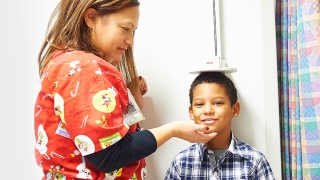
Subscribe to Health Tips
Subscribe to our Health Tips enewsletter to receive health and wellness tips from the pediatric experts at CHOP.
You Might Also Like
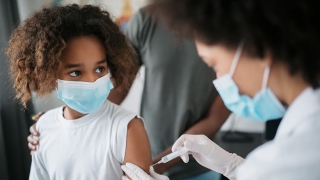
A Dose of Prevention
Learn why vaccinations are important for kids and the community, and what to do if you missed a vaccine and need to get back on track.

Preparing for an Annual Well Visit
Being properly prepared for annual well visits is a great way to get the most out of each appointment with your pediatrician.

How to Have a Productive Video Visit
If your child is scheduled for an online doctor’s appointment, read these tips to get the most out of your visit.
Internet Explorer Alert
It appears you are using Internet Explorer as your web browser. Please note, Internet Explorer is no longer up-to-date and can cause problems in how this website functions This site functions best using the latest versions of any of the following browsers: Edge, Firefox, Chrome, Opera, or Safari . You can find the latest versions of these browsers at https://browsehappy.com
- Publications
- HealthyChildren.org
Shopping cart
Order Subtotal
Your cart is empty.
Looks like you haven't added anything to your cart.
- Career Resources
- Philanthropy
- About the AAP
- The Role of the Pediatrician in the Promotion of Healthy, Active Living
- How Can You Support Patients in Healthy, Active Living? Check Out Updated Report
- Helping Kids Build Healthy Active Lives: AAP Policy Explained
- Climate Change & Children’s Health: AAP Policy Explained
- News Releases
- Policy Collections
- The State of Children in 2020
- Healthy Children
- Secure Families
- Strong Communities
- A Leading Nation for Youth
- Transition Plan: Advancing Child Health in the Biden-Harris Administration
- Health Care Access & Coverage
- Immigrant Child Health
- Gun Violence Prevention
- Tobacco & E-Cigarettes
- Child Nutrition
- Assault Weapons Bans
- Childhood Immunizations
- E-Cigarette and Tobacco Products
- Children’s Health Care Coverage Fact Sheets
- Opioid Fact Sheets
- Advocacy Training Modules
- Subspecialty Advocacy Report
- AAP Washington Office Internship
- Online Courses
- Live and Virtual Activities
- National Conference and Exhibition
- Prep®- Pediatric Review and Education Programs
- Journals and Publications
- NRP LMS Login
- Patient Care
- Practice Management
- AAP Committees
- AAP Councils
- AAP Sections
- Volunteer Network
- Join a Chapter
- Chapter Websites
- Chapter Executive Directors
- District Map
- Create Account

- Materials & Tools
- Clinical Practice
- States & Communities
- Quality Improvement
- Implementation Stories
Well-Child Visits: Parent and Patient Education
The Bright Futures Parent and Patient Educational Handouts help guide anticipatory guidance and reinforce key messages (organized around the 5 priorities in each visit) for the family. Each educational handout is written in plain language to ensure the information is clear, concise, relevant, and easy to understand. Each educational handout is available in English and Spanish (in HTML and PDF format). Beginning at the 7 year visit , there is both a Parent and Patient education handout (in English and Spanish).
For the Bright Futures Parent Handouts for well-child visits up to 2 years of age , translations of 12 additional languages (PDF format) are made possible thanks to the generous support of members, staff, and businesses who donate to the AAP Friends of Children Fund . The 12 additional languages are Arabic, Bengali, Chinese, French, Haitian Creole, Hmong, Korean, Polish, Portuguese, Russian, Somali, and Vietnamese.
Reminder for Health Care Professionals: The Bright Futures Tool and Resource Kit, 2nd Edition is available as an online access product. For more detailed information about the Toolkit, visit shop.aap.org . To license the Toolkit to use the forms in practice and/or incorporate them into an Electronic Medical Record System, please contact AAP Sales .
Parent Educational Handouts
Infancy visits.

3 to 5 Day Visit

1 Month Visit

2 Month Visit

4 Month Visit

6 Month Visit

9 Month Visit
Early childhood visits.

12 Month Visit

15 Month Visit

18 Month Visit

2 Year Visit

2.5 Year Visit

3 Year Visit

4 Year Visit
Parent and patient educational handouts, middle childhood visits.

5-6 Year Visit

7-8 Year Visit


7-8 Year Visit - For Patients

9-10 Year Visit

9-10 Year Visit - For Patients
Adolescent visits.

11-14 Year Visit

11-14 Year Visit - For Patients

15-17 Year Visit

15-17 Year Visit - For Patients

18-21 Year Visit - For Patients
Last updated.
American Academy of Pediatrics
- For Parents
- For Educators
- Sitio para padres
- Parents Home
- General Health
- Growth & Development
- Diseases & Conditions
- Pregnancy & Baby
- Nutrition & Fitness
- Emotions & Behavior
- School & Family Life
- First Aid & Safety
- Doctors & Hospitals
- Expert Answers (Q&A)
- All Categories
- All Wellness Centers

- Sitio para niños
- How the Body Works
- Puberty & Growing Up
- Staying Healthy
- Staying Safe
- Health Problems
- Illnesses & Injuries
- Relax & Unwind
- People, Places & Things That Help

- Sitio para adolescentes
- Sexual Health
- Food & Fitness
- Drugs & Alcohol
- School & Jobs

Well-Child Visit Schedule
- Larger text size Large text size Regular text size
Our well-child visit schedule for checkups lets you know how often kids should see a doctor, even when they're not sick. Read the articles below to find out what to expect at your child's next wellness checkup!
- Your Child's Checkup: Newborn
- Your Child's Checkup: 3-5 Days
- Your Child's Checkup: 1 Month
- Your Child's Checkup: 2 Months
- Your Child's Checkup: 4 Months
- Your Child's Checkup: 6 Months
- Your Child's Checkup: 9 Months
- Your Child's Checkup: 1 Year (12 Months)
- Your Child's Checkup: 15 Months
- Your Child's Checkup: 1.5 Years (18 Months)
- Your Child's Checkup: 2 Years (24 Months)
- Your Child's Checkup: 2.5 Years (30 Months)
- Your Child's Checkup: 3 Years
- Your Child's Checkup: 4 Years
- Your Child's Checkup: 5 Years
- Your Child's Checkup: 6 Years
- Your Child's Checkup: 7 Years
- Your Child's Checkup: 8 Years
- Your Child's Checkup: 9 Years
- Your Child's Checkup: 10 Years
- Your Child's Checkup: 11 Years
- Your Child's Checkup: 12 Years
- Your Child's Checkup: 13 Years
- Your Child's Checkup: 14 Years
- Your Child's Checkup: 15 Years
- Your Child's Checkup: 16 Years
- Your Child's Checkup: 17 Years
- Your Child's Checkup: 18 Years
- Your Child's Checkup: 19 Years
- Your Child's Checkup: 20 Years
- Your Child's Checkup: 21 Years
Doctor Visits
Make the Most of Your Child’s Visit to the Doctor (Ages 11 to 14 Years)

Take Action
Kids ages 11 to 14 years need to go to the doctor or nurse for a “well-child visit” once a year.
A well-child visit is when you take your child to the doctor to make sure they’re healthy and developing normally. This is different from other visits for sickness or injury.
At a well-child visit, the doctor or nurse can help catch any problems early, when they may be easier to treat.
Learn what to expect so you can make the most of each visit.
Child Development
How do i know if my child is growing and developing on schedule.
Your child’s doctor or nurse can help you identify “developmental milestones,” or signs to look for that show your child is developing normally. This is an important part of the well-child visit.
Some developmental milestones are related to your child’s behavior and learning, and others are about physical changes in your child’s body.
Check out these resources to learn more about developmental milestones:
- Developmental Milestones (Ages 9 to 11 years)
- Developmental Milestones (Ages 12 to 14 years)
Behavior Changes
What are some changes i might see in my child’s feelings, relationships, and behavior.
Developmental milestones for kids ages 11 to 14 years include:
- Wanting more independence and privacy
- Having mood swings (going quickly from happy to sad or sad to happy)
- Showing more concern about what their friends and classmates think
- Developing stronger problem-solving skills
- Developing a clearer sense of right and wrong
- Challenging rules and resisting advice from parents
This is also a time when some kids may start showing signs of depression or eating disorders. Bullying and social media use may also become issues at this age. It’s important to:
- Make sure the doctor screens your child for depression
- Have your child screened for anxiety
- Know the signs of eating disorders
- Teach your kids to use social media safely
- Watch for signs of bullying
Physical Changes
What physical changes will my child go through.
Many kids ages 11 to 14 years are going through puberty. Puberty is when a child’s body develops into an adult’s body.
- For girls, puberty usually starts between ages 9 and 13 years. Get more information about puberty to share with your daughter .
- For boys, it usually starts between ages 10 and 13 years. Get more information about puberty to share with your son .
You can help by giving your child information about what changes to expect during puberty. You can also encourage your child to talk about puberty with the doctor or another trusted adult, like a teacher or school nurse.
Puberty can be a difficult time for gender-diverse children — kids who feel that they’re a different gender than the sex that’s listed on their birth certificate. Encourage your child to talk with you or their doctor if they have questions about their gender. Find tips for parenting a gender-diverse child .
Behavior and Emotions
The doctor or nurse will pay special attention to signs of certain issues. .
The doctor or nurse will offer additional help if your child may:
- Be depressed
- Have anxiety
- Struggle with an eating disorder
- Use tobacco, alcohol, or drugs
- Experience any kind of violence
And if your child may be having sex, the doctor or nurse will talk to your child about preventing STIs (sexually transmitted infections) — also called STDs (sexually transmitted diseases) — and pregnancy. Learn how to talk with your child about preventing STIs .
The doctor or nurse will make sure you and your child have the resources you need.
This may include telling you and your child about:
- Websites or apps that have helpful health information
- Organizations in your community where you can go for help
If needed, the doctor or nurse may also refer your child to a specialist.
Take these steps to help you and your child get the most out of well-child visits.
Gather important information.
Take any medical records you have to the appointment, including a record of vaccines (shots) your child has received.
Make a list of any important changes in your child’s life since the last visit, like a:
- New brother or sister
- Separation or divorce — or a parent spending time in jail or prison
- New school or a move to a new neighborhood
- Serious illness or death of a friend or family member
Use this tool to keep track of your child’s family health history .
Help your child get more involved in visits to the doctor.
Once your child starts puberty, the doctor will usually ask you to leave the room for a few minutes so your child can ask questions about their health. This lets your child develop a relationship with the doctor or nurse, and it's an important step in helping your child learn about their health care.
Your child can also:
- Call to schedule appointments (if the doctor’s office allows it)
- Help you fill out medical forms
- Write down questions for the doctor or nurse
For more ideas, check out these tips to help your child take charge of their health care . You can also share this list of questions for the doctor with your child .
What about cost?
Under the Affordable Care Act, insurance plans must cover well-child visits. Depending on your insurance plan, you may be able to get well-child visits at no cost to you. Check with your insurance company to find out more.
Your child may also qualify for free or low-cost health insurance through Medicaid or the Children’s Health Insurance Program (CHIP). Learn about coverage options for your family.
If you don’t have insurance, you may still be able to get free or low-cost well-child visits. Find a health center near you and ask about well-child visits.
To learn more, check out these resources:
- Free preventive care for children covered by the Affordable Care Act
- How the Affordable Care Act protects you and your family
- Understanding your health insurance and how to use it [PDF - 698 KB]
Ask Questions
Make a list of questions you want to ask the doctor..
Before the well-child visit, write down 3 to 5 questions you have — and ask your child if they have any questions to add. This visit is a great time to ask the doctor or nurse any questions about:
- A health condition your child has (like an allergy, asthma, or acne)
- Changes in behavior or mood
- Loss of interest in favorite activities
- Problems at school (like learning challenges or not wanting to go to school)
Here are some questions you may want to ask:
- How can I make sure my child is getting enough physical activity?
- How can I help my child eat healthy?
- Is my child at a healthy weight?
- Is my child's body developing normally?
- Is my child up to date on vaccines?
- How can I help my child succeed at school?
You may also want to ask:
- How can I talk with my child about sex?
- How can I talk with my child about tobacco, alcohol, and drugs?
- How can I teach my child to use the internet safely?
- How can I talk with my child about bullying?
Take a notepad, smartphone, or tablet and write down the answers so you can remember them later.
Get tips to help you:
- Talk with your child about sex
- Talk with your child about tobacco, alcohol, and drugs
- Talk with your child about bullying
Find more tips to talk to your child about a range of tricky topics .
Ask what to do if your child gets sick.
Make sure you know how to get in touch with a doctor or nurse when the office is closed. Ask how to get hold of the doctor on call, or if there's a nurse information service you can call at night or on the weekend.
What to Expect
Know what to expect..
During each well-child visit, the doctor or nurse will ask you questions, do a physical exam, and update your child’s medical history. You'll also be able to ask your questions and discuss any problems.
The doctor or nurse will ask you and your child questions.
The doctor or nurse may ask about:
- Behavior — Does your child have trouble following directions at home or at school?
- Health — Does your child often complain of headaches or other pain? How much sleep does your child get? When was their last visit to the dentist?
- Safety — Does anyone in your home have a gun? If so, is it unloaded and locked in a place where your child can’t get it?
- School and activities — Does your child look forward to going to school? What does your child like to do outside of school?
- Eating habits — What does your child eat on a normal day?
- Family and friends — Have there been any recent changes in your family? How many close friends does your child have? Has your child been bullied at school or online?
- Emotions — Does your child often seem sad, stressed, or bored? Do they seem scared or worried a lot? Does your child have someone to talk to about problems?
- Sexuality — Have you talked with your child about puberty? Is your child dating?
The answers to questions like these will help the doctor or nurse make sure your child is healthy, safe, and developing normally.
Physical Exam
The doctor or nurse will also check your child’s body..
To check your child’s body, the doctor or nurse will:
- Measure height and weight and figure out your child's body mass index (BMI)
- Check your child’s blood pressure
- Check your child’s vision and hearing
- Check your child’s body parts (this is called a physical exam)
- Decide if your child needs any lab tests, like a blood test
- Give your child shots they need
Learn more about your child’s health care:
- Find out how to get your child’s shots on schedule
- Learn about getting your child’s vision checked
Content last updated February 16, 2024
Reviewer Information
This information on well-child visits was adapted from materials from the Centers for Disease Control and Prevention and the National Institutes of Health.
Reviewed by: Sara Kinsman, M.D., Ph.D. Director, Division of Child, Adolescent, and Family Health Maternal and Child Health Bureau Health Resources and Services Administration
Bethany Miller, M.S.W. Chief, Adolescent Health Branch Maternal and Child Health Bureau Health Resources and Services Administration
Diane Pilkey, R.N., M.P.H. Nursing Consultant, Division of Child, Adolescent, and Family Health Maternal and Child Health Bureau Health Resources and Services Administration
October 2021
You may also be interested in:

Get Your Pre‑teen’s Vaccines on Schedule

Talk to Your Kids About Sex and Healthy Relationships

Get Your Teen Screened for Depression
The office of disease prevention and health promotion (odphp) cannot attest to the accuracy of a non-federal website..
Linking to a non-federal website does not constitute an endorsement by ODPHP or any of its employees of the sponsors or the information and products presented on the website.
You will be subject to the destination website's privacy policy when you follow the link.
All About Your Child’s Well-Baby Visits

From the first few days of life all the way through to age 21, your child will have regular appointments with her healthcare provider. These are often referred to as well-baby visits or well-child checkups. Initially, they will happen every few months or so, but later on they will happen annually. Learn why well-child checkups are important, what the typical schedule is, and how to get the most out of each visit.
Well-Child Checkup Schedule
Well-child checkups are crucial for keeping your little one healthy and safe as she grows and develops. Below you will find the standard schedule of well-child checkups for the first three years, along with a few examples of what may come up during each checkup. Beginning at age 3, most children will have annual well-child visits. Keep in mind that your child’s healthcare provider may recommend additional visits, and you can always schedule an extra visit between appointments if your little one needs medical care.
The First Week
This visit usually happens within 72 hours of your newborn being home—usually when your baby is about 3 to 5 days old. As part of this checkup your child’s skin color may be checked for signs of jaundice . Your child’s provider may also take a peek inside your newborn’s mouth for signs of tongue-tie . If you are breastfeeding, your little one’s provider can answer any questions you have about latch or sore nipples , for example. The provider may also be able to recommend a lactation consultant for additional help and support.
1 Month Old Checkup
During this visit, your child’s healthcare provider may check things like your baby’s reflexes and muscle tone, as well examining the soft spots on your baby’s head called the fontanelles. If there’s something specific you’d like your child’s provider to check, go ahead and mention it. Your baby’s provider may ask you about how feeding is going. For example, you may be asked how much formula you’re offering, or how often you breastfeed your baby. If you’re planning to return to work soon while continuing to breastfeed, your newborn’s provider may give you advice on pumping and storing breast milk. You might also like to use this opportunity to ask how to go about finding good childcare. Use this appointment to ask any questions you have about adjusting to life as a parent. For example, if you suspect you may have postpartum depression or are not recovering as you had hoped after childbirth , bring this up as well. If you’re the dad, you might like to ask about what you can do to bond with your baby.
2 Months Old Checkup
At this visit your baby may receive some vaccines, including the DTaP, Hib, and IPV vaccines. Vaccinations will be given at a number of different well-child checkups, so it’s worth taking a look at the immunization schedule or asking your child’s provider for guidance on which vaccines to expect when. Your baby’s heart and lung health may be checked. Your child’s provider will use a stethoscope to listen to your baby’s heartbeats for signs of irregularity, and to listen to your baby’s lungs for signs of breathing difficulties. If your baby has diaper rash , your child’s healthcare provider can recommend ointments or barrier creams for treatment and prevention. Your child’s provider can also let you know about other common baby rashes to keep an eye out for.
4 Months Old Checkup
At this visit, your baby’s provider may examine your child's eyes and track her eye movements. Your child’s provider may also move your baby’s legs to check that the joints are developing well, and press gently on your baby’s tummy to check whether the organs are forming well. At this point your doctor will ask you about your baby’s sleep, including nap times. To help you keep track of this, and to help make sure your baby’s sleeping well, we suggest downloading the Smart Sleep Coach by Pampers™. Co-developed with pediatricians and backed by science, this easy-to-use app is like having a personal sleep coach, in your pocket! Get started today by taking their free sleep assessment .
6 Months Old Checkup
This month, your child’s healthcare provider may offer pointers on introducing solids and tell you about signs of an allergic reaction to watch for as you introduce new foods one at a time. Your child’s provider can also give you personalized advice on which foods to start with, how to set up healthy eating habits, and how to actually feed your baby solids.
9 Months Old Checkup
As your baby’s teeth start erupting , your child’s healthcare provider may check on their growth and recommend a good pediatric dentist in your area. Your baby’s provider can also show you how to care for those first tiny teeth. Other topics that may come up at this checkup include how to wean your baby off the bottle when the time comes, when to start giving cow’s milk, and when to introduce utensils and a sippy cup.
1 Year Old Checkup
During this visit your child’s healthcare provider may ask about certain fine and gross motor skills , such whether your child can pull up to a standing position, or walk on his own or with his hand held, or use his finger to point at objects he wants. You might like to ask your child’s healthcare provider about when your little one might start walking , if he isn’t already; what baby proofing measures you should take at home now that your child is getting more mobile; and where to go to get shoes fitted for your child.
15 Months Old Checkup
Your child’s healthcare provider may ask about how your toddler’s interpersonal, language, and cognitive skills are coming along. For example, she might ask whether your child is starting to explore more independently, whether he points to common objects when you say their names, and whether he can follow simple instructions like “give the spoon to Daddy.” If you are planning to have another baby soon, you might like to ask the healthcare provider about how to introduce your toddler to the concept of him getting a little brother or sister.
18 Months Old Checkup
As your child gets more active and independent you may like to ask your child’s provider about strategies for keeping your child safe in your home environment. This is also a good time to discuss ways to manage your child's behavior and set up age-appropriate rules and boundaries. If your toddler has certain risk factors, the relevant screening tests may be offered at this checkup. For example, screening tests may be recommended for things like hearing, vision, development delays, or autism. Your provider may also bring up the topic of potty training, and go over some of the signs of readiness for potty training .
2 Years Old Checkup
Before this visit you may have been wondering about the upcoming “terrible twos” and how you should handle temper tantrums and the inevitable meltdowns at the grocery store. This visit is a great chance to bring up your questions and concerns around how your child’s behavior and personality may be evolving. Your child’s provider will explain what is normal during this stage of development and how to support your child’s growing independence. Preschool could be coming up in the next year or two, and your provider can help you find a preschool that's a good fit for your child.
2 ½ Years Old Checkup
Besides the usual checks, one topic that may come up during this visit is potty training. If potty training has begun and isn't going well, or if you're unsure how to get the process started , your provider can offer suggestions. This checkup may also be a great time to talk to your child’s provider about your little one’s temperament and personality. For example, if you have any concerns about how your toddler is interacting with other children, or if your child seems particularly shy, you might like to bring it up to see what advice or reassurance your toddler’s provider can give you.
3 Years Old Checkup
During this session your toddler’s healthcare provider may ask you about anything that’s disturbing your child’s sleep, like nightmares, for example, and how to handle other sleep issues. Screen time may also come up. You may talk about how much screen time a 3-year-old should be getting, and what type of programming is good for a child of this age.
Baby Growth Chart Calculator
Keep an eye on your baby’s average growth by tracking height, weight, and head circumference with our simple tool.
This is a mandatory field.
*Input details of your baby’s last measurements. **Source: World Health Organization
What Happens at a Well-Child Visit?
Each visit may be a little different based on your child’s age and stage of development, any specific needs your child has, and the way your child’s healthcare provider does things. However, here are some of the things that typically happen at a well-child visit in the early years:
Tracking your child’s growth by measuring her length, weight, and head circumference
A physical exam that could include checking your baby’s ears, eyes, mouth, skin, limbs, tummy, and other body parts
An assessment of your child's physical development, including her movement and motor skills
An evaluation of her emotional and cognitive development; for example, checking that your child is reacting and interacting normally for her age, and is learning appropriately for her age
Immunizations may be given
Screening tests or other tests may be recommended if needed
Your child’s provider may give you advice on feeding and nutrition or recommend extra vitamins or supplements, like vitamin D or iron, if they are needed
Your provider may share insights into the next phase of your child’s development. If your child is not developing as expected, the provider will also be able to offer recommendations on treatment or therapies to help your child get back on track.
Your child’s healthcare provider will answer any questions you have about parenting or about your child’s health and well-being. No question is too big or too small. You can ask anything from how much your child should be sleeping during the day to when to switch your car seat from rear facing to front facing.
Your child’s healthcare provider can give your information about resources in your area, and about how to go about certain things like choosing a good babysitter, finding an affordable pediatric dentist, or selecting the right preschool.
Benefits of the Well-Child Visit
Well-child checkups are invaluable for both you and your child. Here are just some of the benefits of the well-child checks:
Spotting issues early. Your child’s healthcare provider will use these visits to keep an eye out for any possible problems so that steps can be taken to get your child back on the right track. As an example, if your little one is gaining too much weight, your provider can give you advice on nutrition so that your child gets back to a healthy weight.
Preventing problems. As an example, ensuring your child is immunized against certain childhood diseases helps prevent your child from getting sick with a preventable disease.
Getting answers. You might have some questions that aren’t pressing enough to warrant a separate doctor’s visit. Knowing that you have a well-child visit coming up gives you a chance to collect all of your questions and have them answered by a medical professional you trust. Remember, there are no “silly questions” when it comes to your child’s health and well-being.
Learning about what’s to come. Your child’s healthcare provider can give you insights and information about the next stage of your child’s development. That means that certain things might be less of surprise when they happen. As an example, your child’s provider might tell you what kind of behavioral changes to expect with the “terrible twos” and how to manage the tantrums that follow.
Creating a strong relationship with your child’s healthcare provider. Seeing your child’s provider regularly gives you the chance to build up a rapport. You’ll get to know her during these well-child visits, and she’ll get to know you and your little one. Having a relationship built on trust ensures that you can work as a team for the best outcomes for your child.
How to Make the Most of the Well-Child Visit
There are a few things you can do to ensure you get the most out of your child’s well-child checkups:
If it’s workable, schedule the visit for a time when you think your child will be well-rested and well-fed, and try to pick a time when you yourself aren’t rushed. Also, consider how busy your child’s healthcare provider will be. It may be easiest if you can get the first appointment of the day, or one that’s not during “rush hour.”
If it’s possible, both parents should be at the first few visits to ensure that you both get to know your child’s healthcare provider and get the same basic information about newborn baby care
Pack everything you’ll need like your insurance information, your child’s medical history, and your diaper bag (filled with extra diapers, snacks, and toys)
Consider keeping a physical or digital record of what was discussed at each well-child visit. Keep copies of your child’s lab results and evidence of immunizations in the same spot or format as well. Having all this information in one place from the start will make it easier to look back and find the information when you need it. When your child enters preschool or school, you may need to provide documentation of certain medical details.
Dress your child in clothes that are easy to remove and put back on. Your little one may be undressed for part of the visit and your child’s healthcare provider may need easy access to give immunizations.
Write down any questions you have and take the list with you so you don’t forget anything important. Having a list of questions also allows you to focus on the answers instead of thinking ahead about what to ask next.
Using the Smart Sleep Coach by Pampers™ to track your baby’s night sleeps and naps can be a huge help when discussing your baby’s health and development with your doctor. By taking a broad view of your baby’s sleep, you can understand and shape your baby’s sleep and give them the rest they need to keep growing and developing well. In fact, if you're experiencing sleep challenges, you can take this free sleep assessment to get helpful guidance and support on how to get sleep back on track!
The bottom line
Well-child checkups are important for your child. They allow the healthcare provider to to track your child’s growth and development, give vaccinations or screening tests that are needed, and identify any problems nice and early. By working together, you and your child’s provider can give your child the best possible start in life.
Plus, each well-child visit is a great opportunity for you to ask any questions you have about your child’s health and parenting in general.
Try not to miss your scheduled well-baby checkups; they can be a wealth of information and an important way to help ensure your child’s happy and healthy development. By taking advantage of these one-on-one sessions with your child’s provider, you may find he becomes less of a “provider” and more of a partner in your parenting journey.
How We Wrote This Article The information in this article is based on the expert advice found in trusted medical and government sources, such as the American Academy of Pediatrics and the American College of Obstetricians and Gynecologists. You can find a full list of sources used for this article below. The content on this page should not replace professional medical advice. Always consult medical professionals for full diagnosis and treatment.
- healthychildren.org. “AAP Schedule of Well-Child Care Visits.”
- Kids Health. “Your Child's Checkup: 3 Years.”
- CDC. “Developmental Monitoring and Screening.”
- Kids Health. “Your Child's Checkup: 1.5 Years (18 Months).”
- Kids Health. “Your Child's Checkups.”
Review this article:
Read more about baby.
- Explore Baby Sleep
- Parenting Life
- Development
Join a World of Support
through Pregnancy and Parenthood.

TRACK WITH TOOLS

LEARN WITH EXPERTS

GET REWARDED

Where You Already Belong
- Family Resources
- Provider Info

Welcome to the Well Visit Planner ®
Your child, your well visit.
A quick and free pre-visit planning tool to focus care on your unique needs and goals.
Get started now: Covers all 15 age-specific well visits from your child’s first week of life to age 6
Learn more about creating a family account
Take about 10 minutes to get a personalized Well Visit Guide. Get the best care focused on your child and family’s unique goals and needs.
Do you want to use the WVP with the children and families you serve?
Learn more here!
What is a Well Visit?: Well visits are regular check-ups with your child’s personal doctor, nurse, or other child health professional. At least 15 visits are recommended in the first six years of life when children are growing rapidly. Be sure to stay on track with well visits to help your child and family thrive.
What families like about using the Well Visit Planner (WVP):
- Saves time filling out forms during visits
- Gives you a personalized Well Visit Guide with results specific to your child and family
- Provides easy to read resources on your needs and priorities
- Helps you and your child’s providers focus care on your goals and needs
- Builds confidence that your child’s care meets expert guidelines
- You choose what sections to complete and share.
Three Easy Steps for Using the Well Visit Planner
The Well Visit Planner was created to be used in partnership with your provider. If you have a unique code from your provider, enter it here now:
Enter provider ID code
If you do not have a provider ID code, please continue:
If you already have a family account, login here.
Plan ahead for well visits for all your children up to age 6
Store, save and send your personalized Well Visit Guides at any time
Pause and return to complete WVP sessions within one week
Access and review educational resources specific to your priorities, needs and goals
Please note that using the Well Visit Planner as a guest and without a “provider ID code” means you must download, save and share your Well Visit Guide each time you use the WVP . Your data and Well Visit Guides will NOT be saved for future review.
Important Note: Without a provider ID code you need to share your Well Visit Guide with your child’s provider(s) yourself.
Your personalized Well Visit Guide summarizes your priorities and needs based on the information you shared in the Well Visit Planner. The guide provides resources about your priorities and gives you example questions to help you discuss your priorities with your child’s provider. Consider these four ways to share your Well Visit Guide with your child’s provider(s).

Save & print
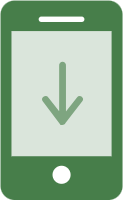
Save to your phone or mobile device
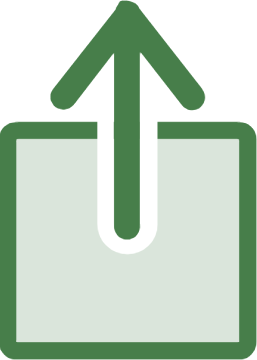
Upload your Well Visit Guide to your Patient Portal

Email your Well Visit Guide to your child's provider
- Sign up for a free family account HERE to save, access, review and share your Well Visit Guides at any time.
- Do you want your Well Visit Guide to be automatically shared with your child's provider(s)? Learn more HERE .
Your Data: The Well Visit Planner is operated on a fully secure platform and your data is not shared with anyone except you and, if you agree, your child’s provider or care team.
What our families are saying!
“It’s helpful to know ahead of time what areas my provider will be checking. It also helps you to get an understanding of the milestones that you want to look out for in your child’s development. The idea that my provider can see what my concerns are before my visit is nice. Best case scenario, they would use the information to bring resources to the start of the visit rather than having to gather them during or after the visit.” (Parent)
“I would recommend the WVP, since it a tool that helps organize and prioritize the medical needs of our children. We can share concerns and our provider can get to know them beforehand. The WVP is a good medical attention guide.” [Parent, translated from Spanish]
“As a mother, I would recommend the use of the Well Visit Planner since it is a tool that can help us be organized with everything we'd like to discuss with the doctors. Also, it gives an overview of the visit.” [Parent, translated from Spanish]
“I really like the WVP, and I believe that it is a really resourceful tool to provide more communication between the provider and families. It is also a great tool to have important information to reference that is specific to the child’s growth and development.” (Parent)

Well Visit Planner: Before Getting Started
Please review and scroll to the bottom before agreeing to the voluntary consent.
VOLUNTARY CONSENT FORM
The purpose of the tool, the Well Visit Planner (WVP), is to enable parents to optimize visit time by focusing on priorities, concerns, and other issues specific to the child and family. The WVP asks parents about their child and family and the kind of topics they want to discuss at their child’s well-child visit. The health care provider can use this information to customize the visit to the needs of the parent and child. Additionally, the tool provides educational information about potential discussion topics based on national recommendations for health care providers.
To use this tool, complete the online Well Visit Planner which should take you about 10 minutes. You will be asked to do the following:
- Agree to the WVP Terms and Conditions.
- You will be asked to voluntarily consent to allow the Child and Adolescent Health Measurement Initiative to mine the de-identified information that you provide in order to analyze and improve the WVP tool.
- Provide basic information about your child who has the upcoming well-child visit.
- Answer a series of questions about your child and family that will help you and your child's health care provider know what they may need to focus on during the visit.
- Pick the topics that you want your child's doctor to address and give you information about at the upcoming visit.
- Receive a "Visit Guide" that you may use at your child's well-visit. This guide highlights the topics you may want to discuss and should be brought to the visit.
- You have the option of creating your own account on the WVP. You can use your account to plan future visits, complete unfinished WVP visits, add other eligible children, and review previous Visit Guides and educational information.
Although we have made every effort to protect your identity, there is a minimal risk of loss of confidentiality. Additionally, you may find that some questions or topics cause you emotional discomfort. You may choose not to answer some of the questions. The choice is up to you.
You may or may not benefit from using the online Well Visit Planner. However, by completing the online tool, you may improve your child's well-visit and you may receive useful information in partnering with your child's health care provider. Additionally, the answers you provide may help your child's health care provider understand your child and family health so that they can better provide well-child care for you. Finally, your participation may help us learn how to benefit parents and children in the future by providing information to health care providers that will help them improve well-child visits.
Confidentiality
We implement a variety of security measures to maintain the safety of your personal information when you enter or submit answers. We offer the use of a secure server. All supplied sensitive information is housed in our database which is protected through a secure dedicated port which only allows data entry from the tool to our database. The database is protected by having a closed-off port for the SQL Server installation. Only authorized personnel with special access rights to our systems are given access to the data. We are required to keep the information confidential.
The WVP does not collect protected health information or information that can lead to the identification of you or your child. You are asked to provide only two pieces of personally identifiable information: child’s first name (optional) and date of birth. These are not stored in our database. The child’s first name is displayed on the Visit Guide. The date of birth is used to calculate the appropriate upcoming well-visit and present the age-specific questions. That visit (e.g. 4 month or 6 month) is stored in our database rather than the date of birth. If you choose to create an account on the WVP, you have the option to add your child’s first name or nickname to appear on the family dashboard and Visit Guide. This name will be saved on our secure servers.
The email address that you use for registering an account will not be shared with any third parties, nor will your email address be sold or used for purposes other than sharing educational resources or sending updates about the Well Visit Planner. You can unsubscribe if you wish to stop receiving emails from us by sending us an email on [email protected] .
In addition, identifying information connected to your computer (IP address) will not be recorded by the CAHMI at any time. If you choose to download or print your Visit Guide, CAHMI will not be liable for any actions related to your choice to disseminate, distribute or copy the Visit Guide with the name(s) of your child(ren) or any other information contained in the guide.
The Well Visit Planner will store the de-identified information that you provide about your child's health, development, and home environment; along with the priorities you select on a secure server. It will not be possible to link this anonymous information to you or your child. We will use this anonymous information to understand parents' concerns and priorities for their well-child visits. This information may also be combined with other parents’ responses and shared with your child’s provider to help them learn more about families they provide care to and improve well-child care for children and their families.
Access and use the Well Visit Planner is free.
You do not have to use the Well Visit Planner. If you do elect to use the Well Visit Planner, and later change your mind, you may discontinue use at any time. If you do not complete the WVP, there will be no penalty or loss of any benefits to which you are otherwise entitled.
If you have any questions, you may contact us at [email protected]
Your provider ID code
If your child’s provider has invited you to use their tailored Well Visit Planner, you can enter their ID code below. This ID code is also the text included after “/” in the WVP URL that your child’s provider shared (i.e. www.wellvisitplanner.org/ providerIDcode ).
Your Customized Well Visit Planner
Lorem ipsum dolor sit amet, consectetur adipiscing elit. Phasellus ut urna ultricies, eleifend tortor ac, sollicitudin tortor. Vestibulum ante ipsum primis in faucibus orci luctus et ultrices posuere cubilia curae; Nunc convallis mi sed consequat tempor. Praesent rhoncus nibh tellus, in sodales neque pellentesque eu
Well Visit Planner: Voluntary Consent
Your privacy is important to us. Please review our terms and conditions , and consent form , check each box below and click the Continue button below.
Session Warning!
Session expired.
Health Library 15 Month Well-Child Visit
Find another condition or treatment, healthy child development and behavior.
Below are milestones most children will reach between now and 18 months of age. Talk with your doctor at your child’s next well-visit if your child is not yet reaching these milestones or there are skills your child no longer shows each day.
Social and Emotional Milestones
- Moves away from you, but looks to make sure you are close by
- Points to show you something interesting
- Puts their hands out for you to wash them
- Looks at a few pages in a book with you
- Helps you dress them by pushing their arm through the sleeve or lifting up their foot
Language and Communication Milestones
- Tries to say three or more words (besides “mama” or “dada”)
- Follows one-step directions without any gestures, like giving you the toy when you say, “give it to me”
Thinking and Learning Milestones
- Copies you doing chores, like sweeping with a broom
- Plays with toys in a simple way, like pushing a toy car
Physical Development Milestones
- Walks without holding on to anyone or anything
- Scribbles with a crayon
- Drinks from a cup without a lid (may spill sometimes)
- Feeds themselves with their fingers
- Tries to use a spoon
- Climbs on and off a couch or chair without help
Healthy Ways to Help Your Child Learn and Grow
Development.
- Teach your child to talk by using simple words and phrases. Repeat and add to what your child says. Describe feelings and emotions. Read books together and use simple words to talk about the pictures.
- Encourage empathy for others by teaching your child to comfort someone who is sad with a hug or pat on the back.
- Play with puzzles and blocks to encourage problem-solving. Practice throwing, rolling and kicking a ball. Use pretend play toys that require imagination, like dolls or play telephones.
- Nurture independence by letting your child dress and feed themselves.
- Teach your child “wanted behaviors.” Give your child attention and praise when behaving well.
- Tantrums are common at this age. Below are tips to help you manage tantrums:
- Use distraction to stop tantrums when you can.
- Set limits to teach and protect your child, not to punish them. Always tell or show your child what they should do instead.
- Limit the need to say “no” by making your home and yard safe for play.
- Let your child choose between two good options when possible.
- It is normal for your child to be anxious or shy around new people. Be sure to comfort your child.
- Give water and 16–24 ounces of whole milk each day. Avoid sugary drinks like juice.
- Cut food into small pieces to help prevent choking.
- Offer your child three meals and two–three healthy snacks each day. Encourage drinking from a cup and using a spoon or fork. Wean your child from the bottle.
- Toddlers need less food because they don’t grow as fast as babies. Don’t worry if your child is picky or eats inconsistently. Let your child choose between healthy options.
- Your child may sleep up to 12–14 hours in a 24-hour period, including one–two naps during the day.
- Have a consistent routine for bed (bathing, brushing teeth, books, bedtime). The hour before bedtime should be calm. Avoid giving your child a bottle or cup in bed.
- If your child wakes during the night, avoid giving enjoyable attention. Use words to reassure them and give a blanket or toy to hold for comfort.
Digital Media Use
- Limit screen time. Smart phones, tablets and TVs are not recommended for children younger than 2 years of age. Children learn best by talking and playing with others.
Water Safety
- Drowning is silent and can happen quickly. Do NOT leave your child alone near any water (including buckets, bathtubs, toilets, pools, ponds, whirlpools). Install a four-foot-tall fence with a self-closing and self-latching gate around home pools. Learn more about water safety .
Vehicle Safety
- Your child’s car seat should stay rear facing in the backseat until they reach the highest weight or height allowed by the car safety seat manufacturer. Learn more about car seat safety and installation.
Home Safety
- Lock up medicines and cleaning supplies. Save the Poison Help Line number (1-800-222-1222) in all phones.
- Keep small electronics that use button batteries out of reach (for example, remote controls, key fobs, calculators, musical greeting cards, flashing holiday jewelry). Learn more about swallowing hazards.
- Store any guns unloaded and locked in a safe. Keep the ammunition locked separately.
This information is to support your visit with your child’s doctor. It should not take the place of the advice of your pediatrician.
Sources: Centers for Disease Control and Prevention, Bright Futures (4th Edition) by the American Academy of Pediatrics
Last Updated 06/2023
Cincinnati Children’s has primary care services at locations throughout Greater Cincinnati.
Translations
- Japanese Translation
- Spanish Translation

Connect With Us
3333 Burnet Avenue, Cincinnati, Ohio 45229-3026
© 1999-2024 Cincinnati Children's Hospital Medical Center. All rights reserved.

The 18-Month Well-Baby Visit
Medical review policy, latest update:.
Medically reviewed to ensure accuracy.
The physical checkup
Developmental milestones, more about your toddler, 18-month vaccines, questions to ask your doctor, is your toddler afraid of going to the doctor, tell it like it is, let him play doctor, make it a treat, check your own stress , share the applause .
Don't forget to schedule the next appointment, which will be the 2-year checkup . Trusted Source American Academy of Pediatrics AAP Schedule of Well-Child Care Visit See All Sources [4]
Updates history
Go to your toddler's month, trending on what to expect, is your toddler being disrespectful here's why and what to do, here’s why your toddler is taking off his clothes and what to do about it, ⚠️ you can't see this cool content because you have ad block enabled., using positive reinforcement on your toddler, what to do if your toddler keeps running away, 11 tips to make flying with a toddler go more smoothly.
- Skip to main content
- Keyboard shortcuts for audio player

Solar eclipse 2024: Follow the path of totality
Solar eclipse, here's what time the eclipse will be visible in your region.
Emily Alfin Johnson

Visitors look through a pair of oversized eclipse glasses set up in the town square on Sunday in Houlton, Maine. Joe Raedle/Getty Images hide caption
Visitors look through a pair of oversized eclipse glasses set up in the town square on Sunday in Houlton, Maine.
On Monday, a solar eclipse will cross from Texas to Maine, putting over 30 million people in the path of totality , with a partial eclipse visible briefly for millions more.
Monday's weather forecast for the path of totality
Totality in the U.S. starts around 1:30 p.m. CT/2:30 ET and continues until 2:30 p.m. CT/3:30 p.m. ET, lasting for a few minutes in each location.
The folks at NASA have a detailed breakdown for anyone in the U.S. Just pop in your ZIP code .
If you're lucky enough to find yourself in the path of totality, you can also find a minute-by-minute breakdown of when totality begins in your area, here.
More resources to enjoy the eclipse
- Sharing the eclipse with tiny humans? Check out these kid-friendly total solar eclipse learning guides from Vermont Public's But Why, and this great explainer from KERA Kids on the difference between a solar and a lunar eclipse .
- Feeling whimsical? Here are three ways to sprinkle a little magic into your eclipse experience .
- Plan to wander into the wild for the best view? Here are some tips from outdoor experts.
- Tips from Bill Nye on the best ways to enjoy the eclipse.
NPR will be sharing highlights here from across the NPR Network throughout the day Monday if you're unable to get out and see it in real time.
Watch CBS News
Did you look at the solar eclipse too long? Doctors explain signs of eye damage
By Sara Moniuszko
Edited By Allison Elyse Gualtieri
Updated on: April 8, 2024 / 3:42 PM EDT / CBS News
Did you look up at the solar eclipse without your safety glasses ? Looking at the sun — even when it's partially covered like during the eclipse on April 8 — can cause eye damage.
There is no safe dose of solar ultraviolet rays or infrared radiation, said Dr. Yehia Hashad , an ophthalmologist, retinal specialist and the chief medical officer at eye health company Bausch + Lomb.
"A very small dose could cause harm to some people," he said. "That's why we say the partial eclipse could also be damaging. And that's why we protect our eyes with the partial as well as with the full sun."
But how do you know if you've hurt your vision? We asked eye doctors what to know.
Is it a sign of eye damage if your eyes hurt after looking at the eclipse?
Your eyes likely won't hurt if you look at the eclipse without protection — but that doesn't make it any less dangerous.
In fact, the painlessness is part of why the event is so concerning to eye care professionals, said Dr. Jason P. Brinton, an ophthalmologist and medical director at Brinton Vision in St. Louis.
"Everyone knows don't look at the sun. If you go out on a bright day and try to look at the sun — it's very uncomfortable, very bright. So most people intuitively associate that with something they should not be doing," Brinton said. "But with the eclipse, so much of that is blocked and so that natural sense of discomfort and aversion to the brightness is not there."
In some cases, the sun can also damage the cornea, which can be painful, Brinton says.
"The good news is that this fully heals without lasting issues, so this is why we don't think about this aspect as much. The retinal issues, on the other hand, are painless and can have permanent, lasting effects on vision," he said.
What are other signs of eye damage from looking at a solar eclipse?
Hashad says there are a few "alarming signals" to be aware of, including:
- Blurred vision
- Scotomas, or dark spots: "You just see a black area or a black spot in the field of vision," Hashad said.
- Color changes: "You don't see the colors the same way you were seeing it before," he said.
- Distorted lines: Hashad says this is clinically known as metamorphopsia, which makes lines appear warped, distorted or bent.
"This could be happening unilateral or bilateral," he said. "So it doesn't necessarily happen in both eyes. It could be affecting one over the other or both eyes together."
Issues may not be apparent immediately, either, sometimes appearing one to a few days following the event.
And while some will regain normal visual function, sometimes the damage is permanent.
"Often there will be some recovery of the vision in the first few months after it, but sometimes there is no recovery and sometimes there's a degree to which it is permanent," Brinton said.
What should you do if you show symptoms of eye damage?
If you're experiencing any symptoms of eye damage, Hashad suggested people "immediately" seek an ophthalmologist's advice.
"Seeing an eye care professional to solidify the diagnosis and for education I think is reasonable," Brinton said.
Unfortunately, there isn't a treatment for solar retinopathy, the official name for the condition.
"Right now there is nothing that we do for this. Just wait and give it time and the body does tend to heal up a measure of it," Brinton explained.
That is why prevention is so important, and remains the "mainstay of treatment of solar retinopathy or solar damage to the retina," Hashad explained.
How long is too long to look at a solar eclipse without glasses?
Any amount of time looking at the solar eclipse without glasses is too long, experts said.
"Damage from the solar eclipse could happen to the retina in seconds," Hashad said. "That's why we don't want people to stare even for a short period of time — even if for a few seconds to the direct sun — whether eclipsed or even partially eclipsed."
Sara Moniuszko is a health and lifestyle reporter at CBSNews.com. Previously, she wrote for USA Today, where she was selected to help launch the newspaper's wellness vertical. She now covers breaking and trending news for CBS News' HealthWatch.
More from CBS News
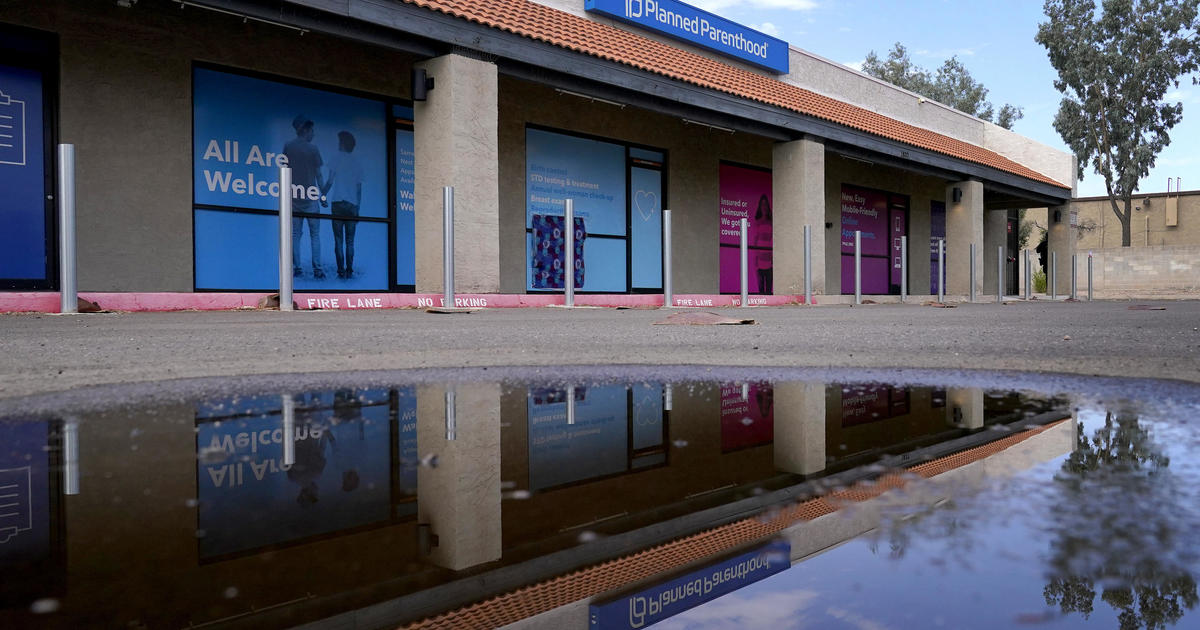
Arizona's abortion ban likely to cause people to travel to states it's still legal

Doctors take on dental duties to reach low-income and uninsured patients

Couple gets engaged on flight to see total solar eclipse
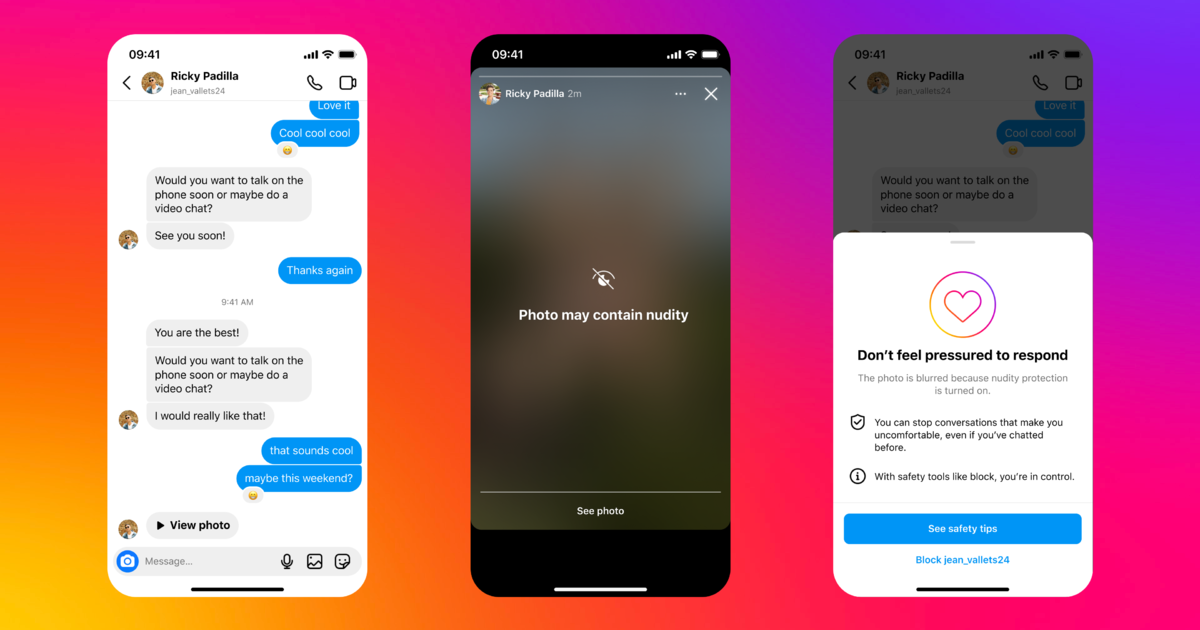
Meta tests new features on Instagram designed to fight teen sextortion
Lawyer fatally shoots former daughter-in-law, fellow attorney at Las Vegas law firm
A lawyer fatally shot his former daughter-in-law, as well as a fellow attorney, during a deposition at a Las Vegas law firm Monday morning, two sources familiar with the investigation said.
The shooter opened fire at the Prince Law Group office in Summerlin during a deposition of his son, whom he had been representing, the sources said Monday afternoon.
The other lawyer was representing his own wife, who was the former daughter-in-law of the shooter and opposing counsel, the sources said.
The alleged gunman died after he turned the gun on himself, according to the sources. His son survived.
The sources characterized the shooting as targeted and domestic-related.
The incident occurred about 10 a.m. at the fifth-floor law office on West Charleston Boulevard near Pavilion Center Drive, Clark County Sheriff Kevin McMahill said at a news conference. Responding officers found the three people with gunshot wounds, police said Tuesday. They were pronounced dead at the scene by medical personnel.
"The suspect was not killed by my police. We believe he took his own life," he said, adding that there was no further threat to the public.
The Clark County coroner's office on Tuesday identified the deceased people as Ashley Prince, 30; Dennis Prince, 57 and Joseph Houston, 77.
Ashley Prince and Dennis Prince died from multiple gunshot wounds, the coroner said, ruling each death was a homicide. Houston died by suicide, according to the coroner.
Robert Eglet told NBC News that the attorney who was slain was his former law partner and that they had known each other for 30 years. The pair “were close friends for a very, very long time," Eglet said.
“He was a very good guy. He was one of the finest trial lawyers in the state of Nevada. It’s tragic, and it’s senseless," he said.
Eglet said his friend specialized in medical malpractice cases.
There are businesses adjacent to the law office where the shooting occurred, McMahill said. First responders evacuated the building and followed an active-shooter protocol, officials said. Hundreds of people were evacuated, police said.
The suspect's vehicle was being investigated, McMahill said, adding that police were trying to shore up a motive.
"We have a theory at this point, but I cannot release any of that information until we've confirmed that information," he said.
A law office on the fifth floor did not answer a call seeking comment Monday afternoon. Police said they were using nearby Red Rock Casino as an assistance center.
If you or someone you know is in crisis, call or text 988 to reach the Suicide and Crisis Lifeline or chat live at 988lifeline.org . You can also visit SpeakingOfSuicide.com/resources for additional support.
Andrew Blankstein is an investigative reporter for NBC News. He covers the Western U.S., specializing in crime, courts and homeland security.
Antonio Planas is a breaking news reporter for NBC News Digital.

IMAGES
VIDEO
COMMENTS
Parents know who they should go to when their child is sick. But pediatrician visits are just as important for healthy children. The Bright Futures/American Academy of Pediatrics (AAP) developed a set of comprehensive health guidelines for well-child care, known as the "periodicity schedule."It is a schedule of screenings and assessments recommended at each well-child visit from infancy ...
Take blood pressure. Measure oxygen levels. Listen to your child's lungs. Look at your child's eyes, ears, and throat. Press on your child's tummy to feel organs. Move your child's hips ...
Well-child visits and recommended vaccinations are essential and help make sure children stay healthy. Children who are not protected by vaccines are more likely to get diseases like measles and whooping cough.These diseases are extremely contagious and can be very serious, especially for babies and young children.
If you are a UnitedHealthcare Community Plan member, you may have access to our Healthy First Steps program, which can help you find a care provider, schedule well-child visits, connect with educational and community resources and more. To get started, call 1-800-599-5985, TTY 711, Monday through Friday, from 8 a.m. to 5 p.m.
7-10 years: Annual well-child check. Vision/hearing and TB screenings; any immunizations previously missed. 11-12 years: Annual well-child check. Depression and TB screenings; DTaP, HPV and ...
Immunizations are usually administered at the two-, four-, six-, 12-, and 15- to 18-month well-child visits; the four- to six-year well-child visit; and annually during influenza season ...
Young children need to go to the doctor or nurse for a "well-child visit" 7 times between ages 1 and 4. A well-child visit is when you take your child to the doctor to make sure they're healthy and developing normally. This is different from other visits for sickness or injury. At a well-child visit, the doctor or nurse can help catch any ...
Well-care, well-baby, or well-child visits are routine visits to your child's healthcare provider for the following: Physical exam. Immunization updates. Tracking growth and development. Finding any problems before they become serious. Providing information on health and safety issues. Providing information on nutrition and physical fitness.
The American Academy of Pediatrics (AAP) recommends well-child visits for babies and young toddlers at 3 to 5 days old, then at ages 1, 2, 4, 6, 9, 12, 15, 18, 24, and 30 months. Starting at age 3, kids and teens need one preventive-care visit every year through age 21. Make scheduling (and remembering) a cinch.
In the world of pediatric care, a well visit is the equivalent of what used to be called a check-up or a physical. Once a year, parents typically make an appointment for a well visit with their family physician or pediatrician to make sure all's well with their child and to voice any concerns. For children 3 and under, though, visits are as frequent as every few weeks in the
Dan Nicklas, MD, a pediatrician at Children's Hospital Colorado's primary care-focused Child Health Clinic, says well-care visits are important for children of all ages and their families. "Regular visits help us get to know you," he says. "We do a physical check of your child — blood pressure, eyes, ears and all that — to make ...
Well Visits and Vaccine Schedule. Well visits are extremely important to your child's growth and development. By functioning as your primary care medical home, UPMC Children's Community Pediatrics encourages you to comply with your well visit schedule so that we can provide comprehensive care. While each age may have a slightly modified well ...
Request an Appointment. 410-955-5000 Maryland. 855-695-4872 Outside of Maryland. +1-410-502-7683 International. Find a Doctor. In addition to taking your child to the healthcare provider when your child is ill, or needs an exam to participate in a particular activity, routine well-care visits for your child are recommended.
1st year: newborn, 2-4 weeks, two months, four months, six months, nine months. 2nd year: 12 months, 15 months, 18 months. 3rd year: 24 months, 30 months (2-1/2 years) Then every 12 months starting at their third birthday. While we often call this a "well visit" or "annual physical," we should really think of this as a preventive care ...
What are the ages for well-child visits? A standard well-child visit schedule spans from infancy through adolescence, and includes checkups at the following ages: In your baby's first year: Newborn visit (3-5 days after birth), at 1 month old, 2 months, 4 months, 6 months, 9 months, and at 12 months; 15 months; 18 months; 2 years; 2½ years ...
Beginning at the 7 year visit, there is both a Parent and Patient education handout (in English and Spanish). For the Bright Futures Parent Handouts for well-child visits up to 2 years of age, translations of 12 additional languages (PDF format) are made possible thanks to the generous support of members, staff, and businesses who donate to the ...
Print. Our well-child visit schedule for checkups lets you know how often kids should see a doctor, even when they're not sick. Read the articles below to find out what to expect at your child's next wellness checkup! Your Child's Checkup: Newborn. Your Child's Checkup: 3-5 Days. Your Child's Checkup: 1 Month.
Overview. Kids ages 11 to 14 years need to go to the doctor or nurse for a "well-child visit" once a year. A well-child visit is when you take your child to the doctor to make sure they're healthy and developing normally. This is different from other visits for sickness or injury. At a well-child visit, the doctor or nurse can help catch ...
Well-Child Checkup Schedule. Well-child checkups are crucial for keeping your little one healthy and safe as she grows and develops. Below you will find the standard schedule of well-child checkups for the first three years, along with a few examples of what may come up during each checkup. Beginning at age 3, most children will have annual ...
What is a Well Visit?: Well visits are regular check-ups with your child's personal doctor, nurse, or other child health professional. At least 15 visits are recommended in the first six years of life when children are growing rapidly. Be sure to stay on track with well visits to help your child and family thrive.
Give water and 16-24 ounces of whole milk each day. Avoid sugary drinks like juice. Cut food into small pieces to help prevent choking. Offer your child three meals and two-three healthy snacks each day. Encourage drinking from a cup and using a spoon or fork.
Here's what will happen at your little one's 18-month well-baby visit, including the physical checkup, developmental milestones and shots. Is your toddler afraid of going to the doctor? What a difference a few months make. At 18 months old, your curious cutie has been busy putting his many new skills to use, from conquering the stairs at home ...
When and where you can see the total solar eclipse : Solar eclipse 2024: Follow the path of totality This tool from NASA allows you to get your exact window to see Monday's eclipse; all you need ...
Any amount of time looking at the solar eclipse without glasses is too long, experts said. "Damage from the solar eclipse could happen to the retina in seconds," Hashad said. "That's why we don't ...
By Andrew Blankstein and Antonio Planas. A lawyer fatally shot his former daughter-in-law, as well as a fellow attorney, during a deposition at a Las Vegas law firm Monday morning, two sources ...